

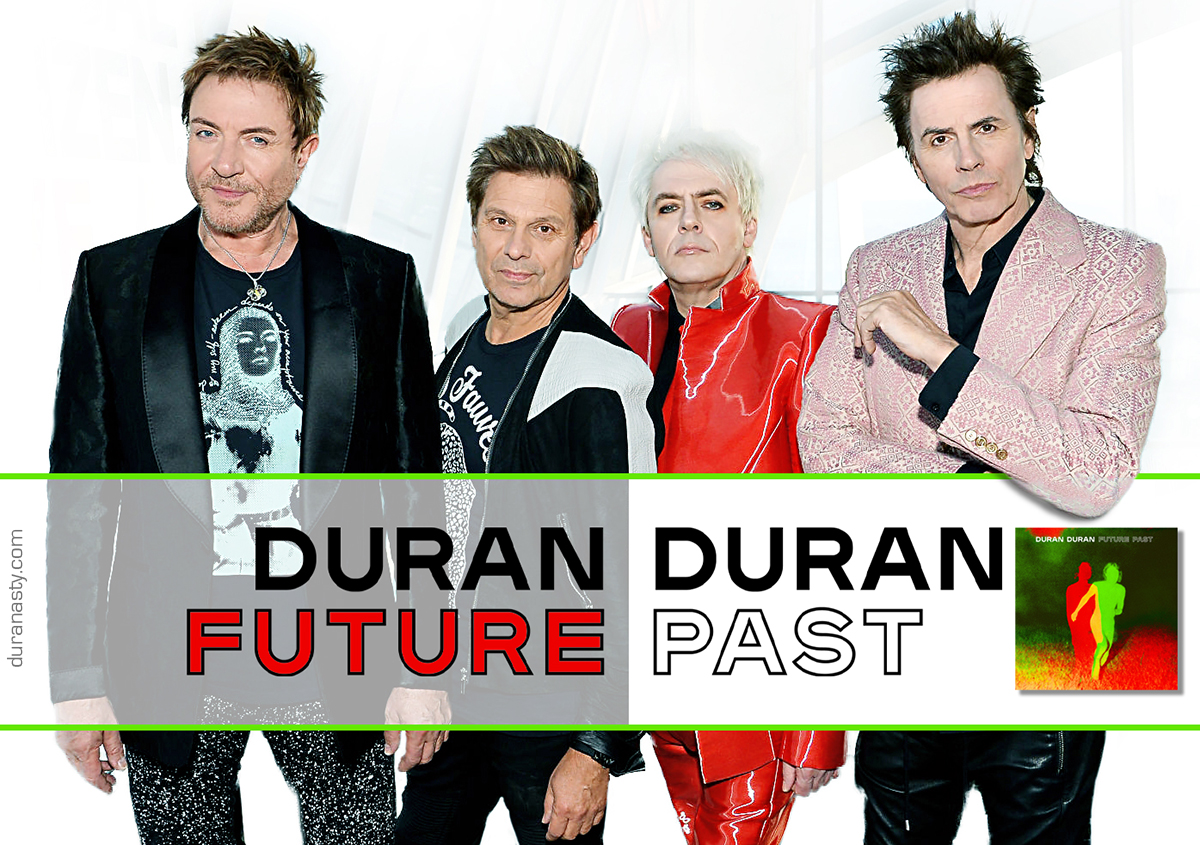
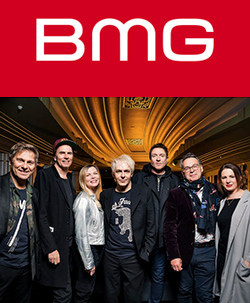
BMG's mission is to help artists make the very most of their songs and recordings in the digital age.
The only significant international company to combine publishing and recordings under one roof, with the purpose to support the artist's career and maximize their income.
Dozens and dozens of interviews with newspapers from all over the world, in different languages, on paper, in video and on radios, full of informations, stories and new statements, which together give us an exhaustive photograph of this new page in the history of Duran Duran called Future Past. This is our way of celebrating it, in the way of an old style fanzine, enjoy this new installment of your Duran Duran web-zine!
The arrival of Future Past, the new Duran Duran album released on October 22th, coincide and marks the 40th anniversary of Duran Duran's self-titled debut album. With Future Past the band also starts a new chapter of its life by signing with BMG for their new release, as well as their post-1997 back catalogue.
“We are super excited to release it. The last couple of years have been tough for everyone and I think anything that can be done to inject some new energy, some enthusiasm, to lift people's spirits, anything creative is a good thing,” says Nick Rhodes, “and that's how we want to launch this record: in a positive way.”
“BMG has been built on working with iconic artists and so we are truly honoured to partner with Duran Duran on their outstanding new album Future Past,” says Alistair Norbury, BMG UK president, repertoire & marketing. “After selling 100 million albums, there is still an ever-present hunger and vitality emanating from the band as evidenced in the stunning new music and pioneering visuals. After 40 years this is a band as relevant as in 1981.”
“We are very happy to be in partnership with the BMG label group internationally. We feel this is a great fit for us and look forward to doing fantastic things together”
John Taylor
Thanks also to the support of the new label and an intense promo-schedule [both online and in-presence] around the album release date, Future Past has hit No. 3 and topped the Independent Albums chart in the U.K, plus went Top 20 in several other countries. Critical and fan reaction has been very positive as well, indicating that the album’s long gestation was indeed time well spent.
“I know that our fanbase love the album — not just love the album, but they’re proud of the album,” says John. “Our fans have taken so much shit over the years — ‘What, you still like Duran Duran?!‘ Even the first time around — ‘You like Duran Duran?!’ So to give them an album that they can say, ‘See…,’ it’s good for them. They’re proud, as are we.”
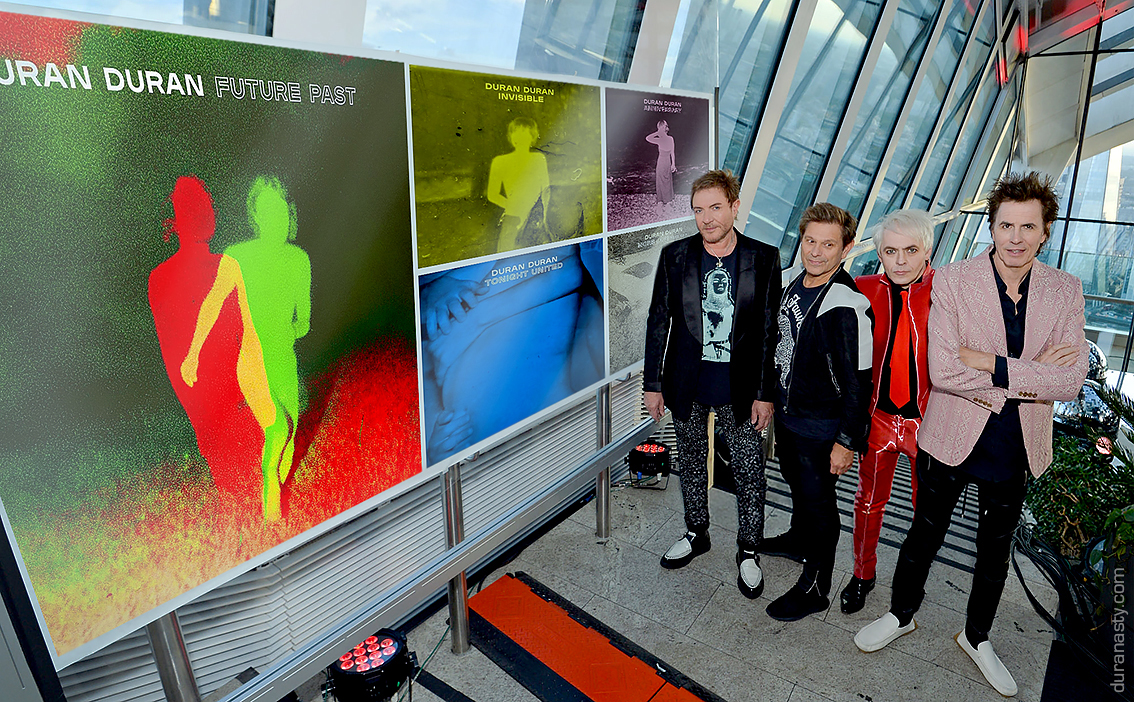
A new strategy
four Instant Gratification releases
With this album the band has adopted the Instant Gratification release strategy. Album presale was already available in May but since then the band has released four digital singles via Instant Gratification, a feature offered by some digital music services which allows selected tracks from an album bundle to be made available prior to the scheduled release date.
Instant Gratification Tracks are tracks that are made available to buy and download individually. Up to 49% of the total number of tracks can be set as Instant Gratification Tracks (for instance, a maximum of 5 out of a 12 tracks album).
The singles the band released prior the album release are Invisible, More Joy, Tonight United and Anniversary. Moreover the band perfomed Give It All Up during their early Summer promotion [without the Tove Lo duet which can be heard on the final album version].
The deluxe edition of the record contains three bonus tracks and fans could also access a series of bundles including coloured vinyl and artwork autographed by the band.

Always up front with new technologies
A special collaboration with 360 Reality Audio

As a band we’ve always looked to new technology for a way to enhance our sound. The Sony 360 system brings a new and different dimension to the tracks.
Nick Rhodes
“
Duran Duran have always been up front in both music and emerging technology through-out their impressive 40-year career and they continue their trend, this time with a special collaboration with 360 Reality Audio, a new immersive music experience using Sony’s spatial sound technologies.
Duran Duran and Sony’s 360 Reality Audio have entered into a special creative collaboration, and first of its kind, to provide fans an entirely new and immersive way to listen to their songs.
The first release from this collaboration was the single ‘Invisible.’ This will be followed by 360 mixes of their new album Future Past, together with new 360 versions of their back catalog.
360 Reality Audio is on supported streaming services Amazon Music HD, TIDAL HiFi, and Deezer HiFi. The official video for ‘Invisible’ features a simulated 360 Reality Audio Experience where fans can immerse themselves in the music with any pair of headphones.
Immersive Mixing
Rhodes believes the key question about any new technology is whether it will enhance the music or whether it’s just a gimmick. The group were faced with this decision when it came to mixing the new album, which is being issued both in stereo and in Sony’s new Reality Audio 360 immersive format.
“We wanted to do the album in that way because it’s a different way to listen to things. You will hear things in a way you wouldn’t if you just listened to it on regular headphones.”
Nick Rhodes
“I played around with it in the studio with Josh Blair, [our engineer] and it’s really good for headphones,” states Rhodes. “I would call it more like an enhanced stereo for around the head, as it’s not so much literally 360. You can put things in the middle in front of your face and move them over to the back of the head, and you can swirl things around the head and you really do feel it, which you wouldn’t think with just stereo in headphones that you would get that sensation.”
“We wanted to do the album in that way because it’s a different way to listen to things. You will hear things in a way you wouldn’t if you just listened to it on regular headphones. Because the mixes are basically made from stems, you can pick something and you can, for example, make the snare drum move across diagonally from behind your head to a corner over in front of your head. We had so much fun doing that.”

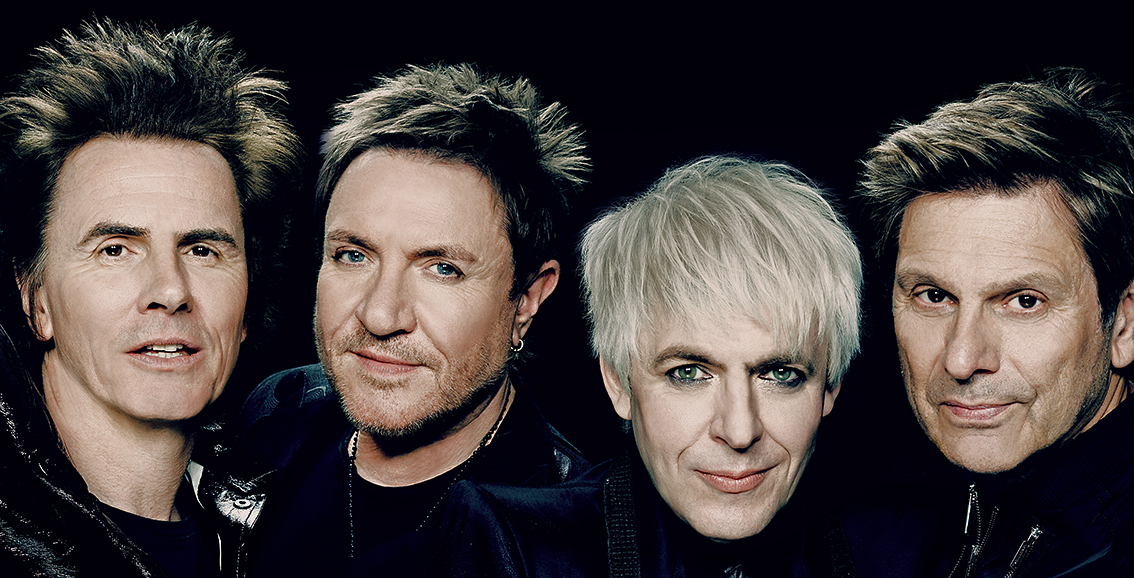
“We believe in our future, in the future of music and in the future of human race”
Simon Le Bon
“
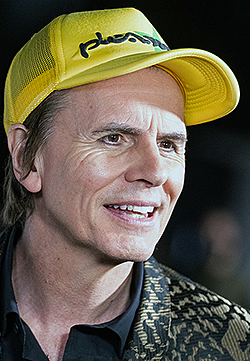
Hamburg, Germany, 2nd September, 2021. John Taylor joins journalists on the red carpet of the The German Radio Prize.
"It's a very personal record," says Rhodes. “There is a balance between light and dark, it reflects the lives we live. Future Past "is the most self-referential album we have made and it's rather personal. It reflects on the past, but at the same time looks to the future, which is what we always try to do with music. A balance between light and shadow, which reflects who we are and the lives we live. “We want to lift people’s spirits and make them smile, and maybe think a little bit.”
“I think there is a strange and autobiographical thread running through this album”, John continues, "which was not always present on the most recent albums we made. There really is a need to mark where we come from, to recognize what we inherited from Giorgio Moroder [Tonight United and Beautiful Lies] and David Bowie [Falling]. This is just a huge thank you. In Future Past we made fresh and exciting music, but it includes also a lot of what has inspired us."
The Concept behind Future Past
“In Future Past the present is implicit" says Simon. "When we experience a moment, when we overcome it, it immediately becomes the past. And in the future, the past is what you are doing now, that is the future past. That’s why the present is like a future past, and that is why it's implicit in this game of words.”
“Every moment you experience in the future will be a past. So everything you do is a future past. It’s almost like saying the present”
Simon Le Bon
“I’m obsessed with the idea of existence; of human existence, our consciousness. Future Past, the songs, says “Don’t cry for what will never last, each moment in time we create, it’s all a future past that we are living now. All we do is create future past. Something to look back in the future. So the idea is not to get stuck in the past, not to be sad because it's gone: just be happy for what you are experiencing now and it will be what you are going to remember fondly in five years. Why can't we enjoy the present while we are living it?”
“Memories don't define us, they are only part of the journey that brings us to this moment”
John Taylor
“We are right in the middle of the past and the future" says John. "We are in the present and I think it's the best place to be, because everything you do is influenced by the past, you can't get away from it, it's always going to be there. And you can try to predict the future but I don't know, I think we all like to think about the past, especially when we are stressed we look back and say, “I remember when I was in school and we had vacations, or when used to dance. They are all beautiful and incredible moments that we all had and it's easy to get lost in that, but I don't know how healthy it would be. I mean, we are the same persons that we were ten, fifteen years ago, we can fill ourselves with those experiences and memories but they do not define us, they are only part of the journey that brings us to this moment.”

The Title
“It really was the right title”, says Rhodes, “when we heard the phrase, John Taylor and I were actually having a conversation with a couple of photographers friends of ours, and we were playing them some of the music, which was in a more rough form at that time, and they said 'Wow, it sounds very future past', John and I looked at each other and said 'Did he just say future past?'”
"We don't like missing an opportunity, so we borrowed the phrase from them and it became the album title, 'cos it did say everything about what the record is, we acknowledge the four decades of music and great time that with we have had with our fans playing live shows but we also remain in a place where we look to the future for everything we're doing and we always try to make contemporary records, so it did feel like the right thing".
John recalls: “one day we played some new songs to some young London photographers we were working with. One of them said “This is like Future Past". When we heard that, we asked if that expression had come right in that moment. They said yes and we immediately thought it was a great title. Until that moment, we had thought about song titles, but not for the album yet.”
“Simon thought that the expression Future Past was so powerful and he decided to write a new song around that concept”
John Taylor
Roger Taylor recalls: “We immediately liked how the two words sounded together: Future Past. It made sense to us. We have a long past, we have been in this for a long time, but we are always looking forward and this is a very futuristic and contemporary album.
“A few days after choosing the name of the album, someone told me:
'You know the name of Dua Lipa's new album (Future Nostalgia),
don't you?' And I thought, 'Holy shit, I can't believe it'. At that point,
we were all so attached to the name, so we decided to keep it that way”
John Taylor

Art: Daisuke Yokota meets Duran
”We obviously have quite a substantial past now,” says keyboardist Nick Rhodes, "but we only ever look to the future." That ethos is reflected in the cover for Future Past, which blends and brightens a pair of originally black-and-white images by Japanese photographer Daisuke Yokota.
“The idea of these figures, that one is stationary and the other is about to run off, resonated with us,” says Nick, who met Daisuke in 2017 while shooting footage for a forthcoming documentary about Japanese photographers. “His thought processes — how he creates work — it's a very new, edgy way of making photos.”
“When Future Past art director Rory McCartney suggested using Daisuke's work, Rhodes readily agreed. “I started overlaying images on top of each other and seeing what happened," says McCartney. “That image resonated with me. It works with the album title but also creates a story.”
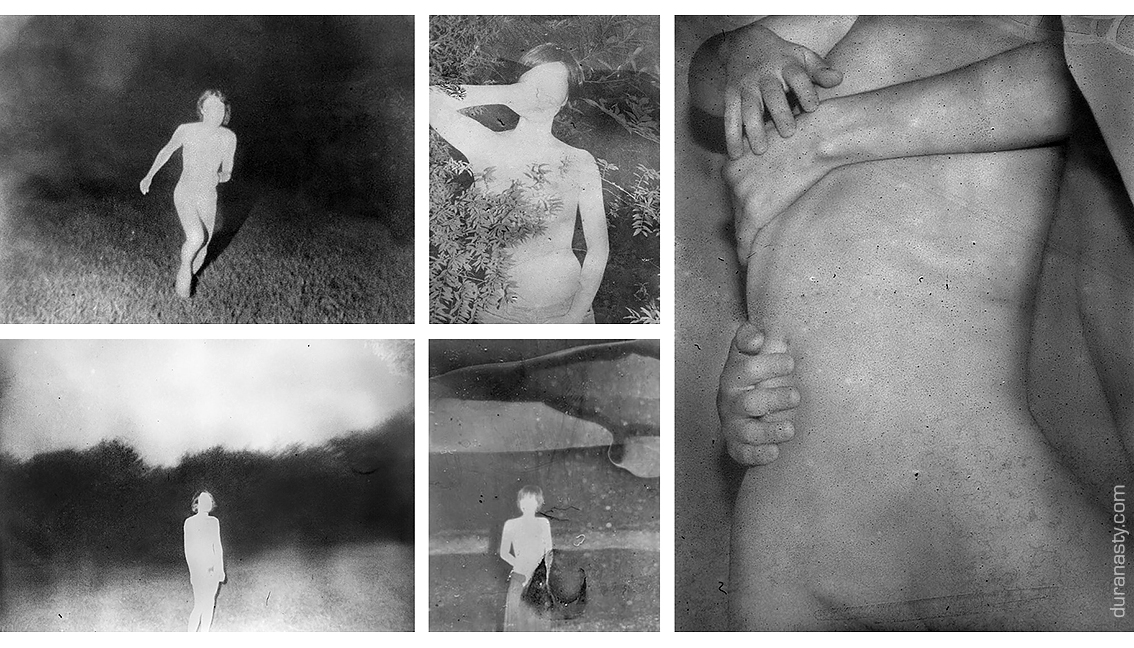
The album and the digital singles covers features Daisuke Yokota's work from different projects such as Nocturnes and Corpus. Most of the photographs are taken from Nocturnes, the dream/nightmare-like scenarios serie, but we can find also pictures from the Corpus serie on Tonight United. This particular set of photos features human figures in black and white get tangled with each other in a locked room. These very intimate images give us a strange feeling about life, death and somehow a distance from everything.
With his strongly contrasted black-and-white photography, Yokota seems, at first glance, to be working in the Japanese photography tradition. However a close examination of his work reveals an individual approach in which the elements of process and intervention play an important role. He uses a combination of digital photography and traditional film to shoot and re-shoot images, which he then manipulates further using other techniques such as photocopying and Photoshop.

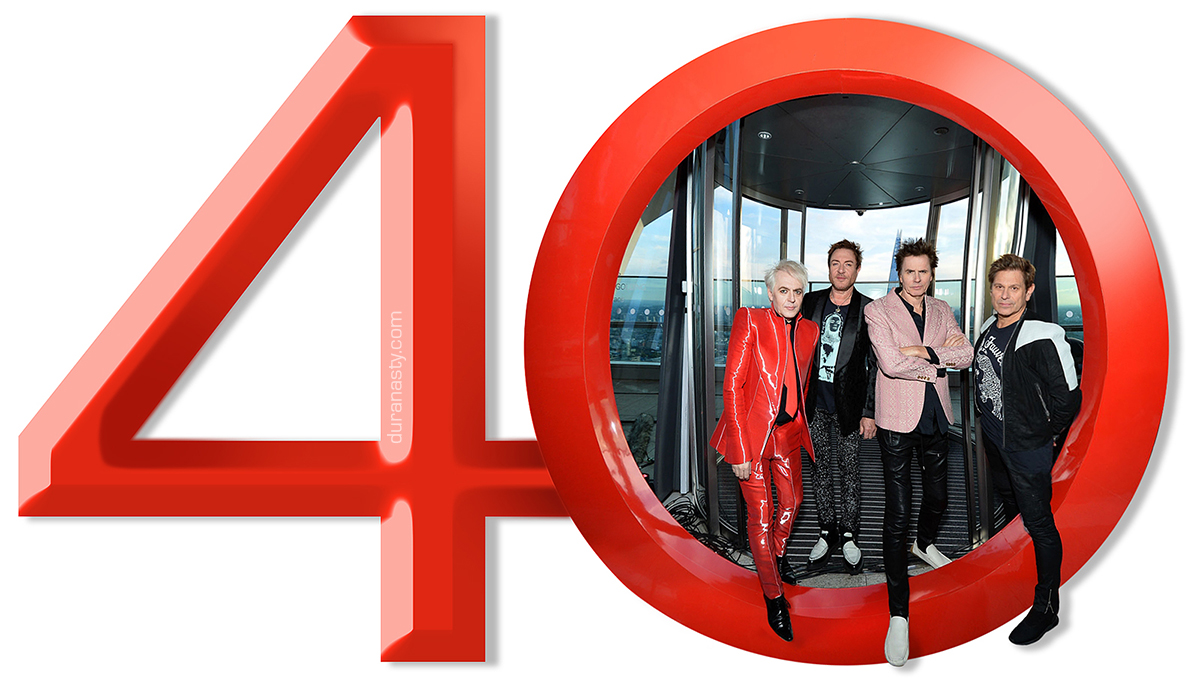
“I kind of feel like if we were to break the band up tomorrow,
all of our hair would
fall out the next day!”
John Taylor
"A couple of years ago, we were starting to think about the anniversary of the first album," says John. "Our manager in particular was getting quite excited about it. We needed to come up with all these ways of celebrating it.'
The band’s managemen “made this huge list of things she thought we could do as part of the celebration” continues John.
I felt like the closer that we got to it, the less appetite that we all got for making a big thing about it. What band celebrates 40 years? You've had the same job for 40 years. Who wants to celebrate that?
“Nick particularly was like, ‘Y’know, is this something we really need to be shouting from the rooftops, that we’ve been together for 40 years? The best thing we can really do is a great new album, because that will speak million words as to why and how we’ve managed to stay together this long.”
The best thing we can do is put out a new album. That speaks a million words about why we still care about each other, why we choose to work with each other and why we’re still together”
A new album, says John, "shows that we care. I mean, there are a lot of things we could have done, like a greatest hits album, that's always a temptation, it's so easy to fall for it and ride the nostalgia wave, but I think we learn from other bands that if you want to maintain your vitality, despite how challenging is to create new music, that is the greatest reward."
“It may sound a bit of a cliché now, but it’s all about being in the moment and looking to the future really” says Roger. “That’s been the secret of the longevity of the band, that we’ve never rested on our laurels. It’s always been about creating new material.”
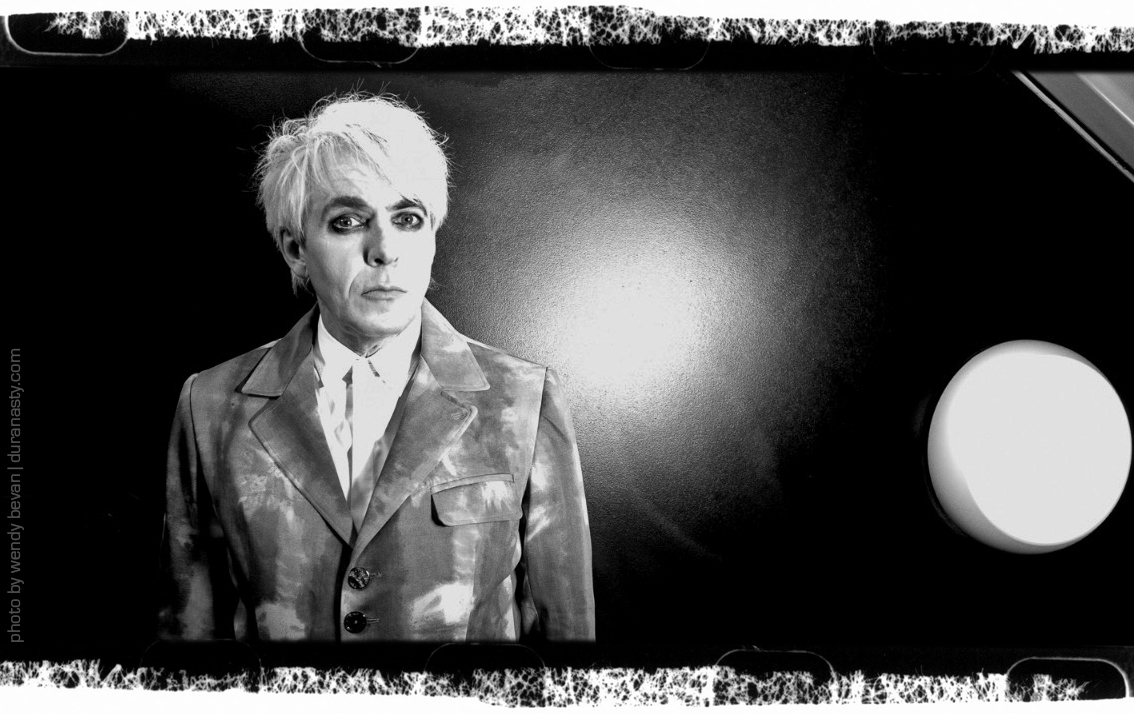
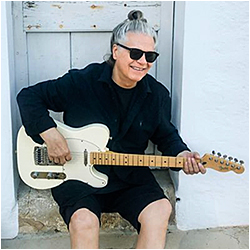
REPORTAGE AND OTHER UNRELEASED MATERIAL IS PART OF THE DEAL WITH BMG
Roger reveals the band have spoken before about making a new album based on songs that didn't make previous records saying, “When we go in the studio, we're all about what we can write next. We've never trawled back to find material, but a collection of the songs from the cutting room floor could be a great album...”
As part of their deal with new record label BMG, Duran Duran hope to finally finish unreleased album Reportage. Guitarist Andy Taylor left the band's line-up near the end of recording the album in 2006. "A few songs need final lyrics," explains Nick Rhodes. "It's in pretty decent shape overall, we'd need three weeks to finish it. It's our missing link, both as our final record with Andy and as something a lot more political than any other Duran record. I like to destroy things I don't think are good enough, but Reportage was never on the destruction pile. It should be out there Nick hopes Andy would be willing to finish his contribution to the album, saying: "I'd have no objection if Andy wanted to do some tweaks. I'd never take anything away from the contribution Andy made to all our songs, and his contribution on Reportage was really good, too. If the album is going out, it needs to be as good as it can be." The other issue is finding time to finish it, as John Taylor explains: "Our energy always goes into current projects." There has been talk of a Duran boxset for years, but John cautions: "Maybe one of us will say after this record, I'm happy to go through the old tapes.' The problem is if a song needs a small tweak, do we really have an appetite for going over something when we've already given it our best shot? While we have the energy to make new music, why not use our energy for that?"
‘We still have that determination to be better than anyone else
– which is of course subjective – but you have to have that will”
Nick Rhodes
“The strangest thing is it seems more like 40 minutes than 40 years” reflects Nick. ”As you get a little older, time becomes elastic. Things you thought were maybe three years ago were seven years ago. But we've had a pretty amazing time together and we've experienced some wonderful things around the world. The shows we've played, people we've met, records we've made, so we are grateful to still be together. We know we work well as a unit. So for the first time in our careers, we decided to make one self-referential song — Anniversary. We just thought that some things are worth celebrating.”
“The fact that we have survived it and we’re still friends and can make records that are still contemporary says a lot about the individuals in the band” continues Nick. “We still have that determination to be better than anyone else – which is of course subjective – but you have to have that will. It’s the sort of merger of all of our personalities to make that one person that is Duran Duran.”
“Duran Duran means a lot to many people around the world so it is certainly our responsibility to continue”
John Taylor
“We created Duran Duran 40 years ago and it's like saying Ralph Lauren or Prius, says John laughing, a great brand and it's ours. That's why it's so special to us and we want only the best. We want to be important, we want to make a difference. I don’t know it is only about what I want or what Simon wants. Duran Duran means a lot to many people around the world so it is certainly our responsibility to continue. Music that's the only thing that matters. I think if you are lucky enough to find a job that generates all this in you, that stops all the bad.”
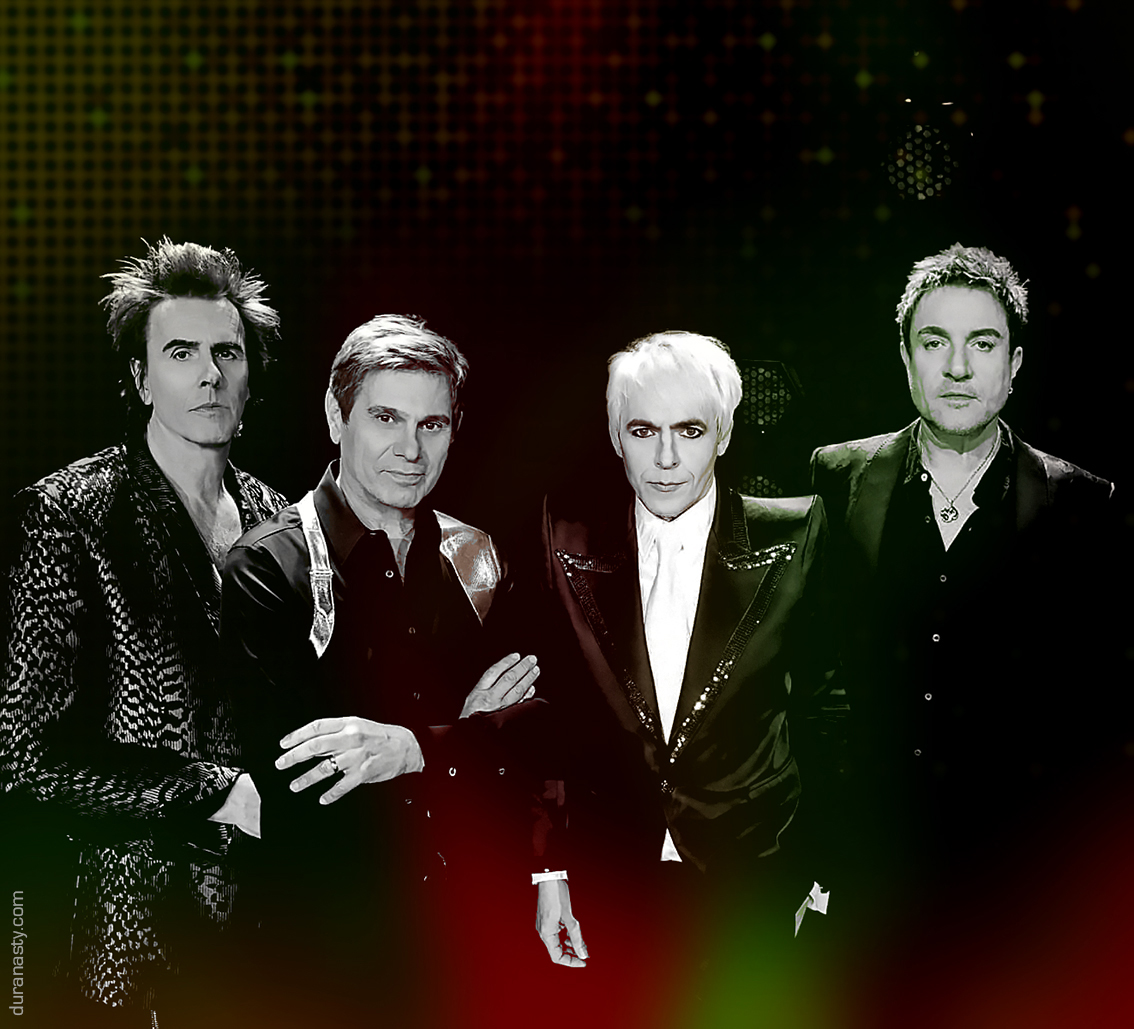

“It's definitely a bolder album, more organic, sonically authentic, but with the pop sensibility that anyone would expect for a Duran Duran record”
Roger Taylor
Premise
“There was a certain inevitability about the new album,” says John. “We get to the end of a touring cycle and we know we need time away from each other – but it’s like a chemical thing, it’s a pull that happens, almost like a mission; we have to go back!”
“There's something about the challenge that still appeals to us,” Rhodes comments on making a new album. "God knows why, the anxiety levels are through the roof. I could be in analysis for the rest of my life and I still wouldn't work it out.”
John Taylor agrees. "I was watching a documentary about Le Mans where the flag goes down and the drivers run across the track and get into their cars. That's kind of how we write: there's an invisible whistle and we immediately attack the space, the emptiness.”
With the prospect of a new record deal the band returned to the studio in November 2018 with the idea of “making Duran Duran sound like the future”, thanks also to a great team of producers and collaborators they got on board the project during the entire process, starting from Erol Alkan who has been there since day one.
When the group convened three years ago to work on new material, they initially thought of recording just an EP with at most six tracks; they ended up with about 25 songs.
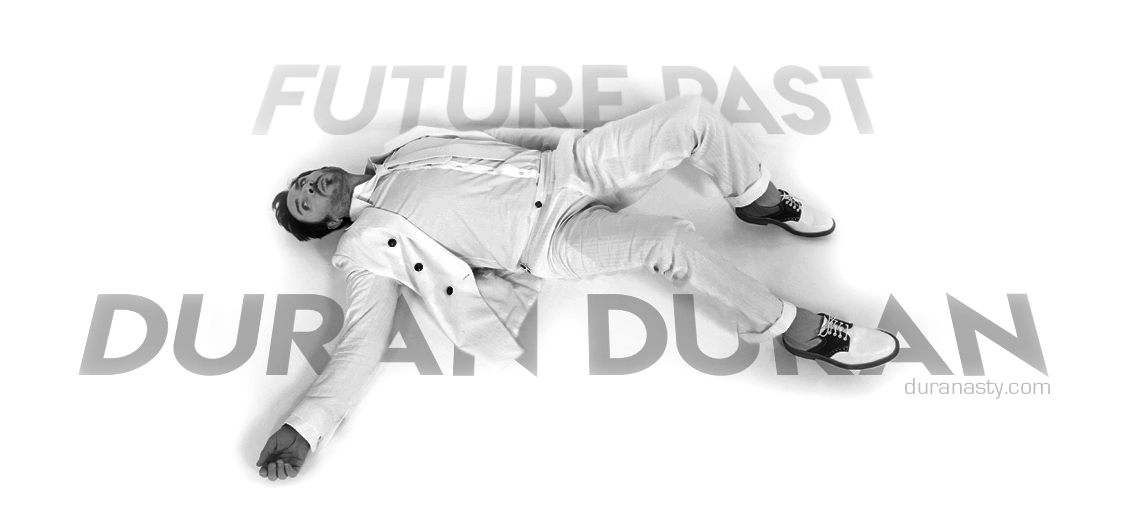
“I wasn’t into making a new album at all,” counters Le Bon.
“I was like: ‘Let’s just do a single’, because I thought nobody’s going to listen to a whole album, people just listen to singles now. But I think I was on my own in that camp and it was a band decision. That’s how we work: four people and no leader.”
Simon Le Bon
“When we first went into the studio in late 2018, I was trying to persuade the guys that all we needed to do was write two or three tracks for an EP,” recalls Simon. “Four days later, with the nucleus of 25-plus strong songs in the can, that all deserved development, I realized we’d be in it for the long haul, but that was before Covid. So here we are in 2021 with our 15th studio album, Future Past, straining at the leash.” I’m not saying it’s epic, but well, yes I am.”
Nick confirms: “Yes, it started like that for Simon and that’s mainly because he’s fundamentally lazy! I mean that in the sweetest way. He likes being on holiday on a boat somewhere, so at first, he doesn’t really like the size of the mountain when it comes to recording a full album. But then we start working and suddenly we’re on our way climbing that mountain and then he’s OK with it. This is exactly what happens on every album.”
“We really do love music,” Le Bon concludes. “It’s a lifelong passion. And I think we’ve been getting better at it. It’s much easier for us to figure out which are the good ideas and which ones aren’t so good. So we spend less time working on stuff that’s not going to make it onto the album. Which is more time to play with your dog and your grandchildren.”
An album about relationships and life
“There's a lot of songs in this album that I think analyse and reflects upon relationships,” says Nick, “for sure it's more about how difficult things can be - part of the album - to find your pathway trough life, and this was written really before pandemic. I think that very human thing that we always strive to have, you need to touch a nerve with people, for me and for everyone in the band I know, what we're looking for is to affect people emotionally, to actually make people smile, or to make people dance, or to make people think about something, or to give people a lyric they can interpret in different ways and to relate it in their own lives.
“It's about the difficulty of carrying on with certain things as you gets older, but then there's the optimism, seeing the perspective of life in a positive way, and how lucky we are to actually be here”
Nick Rhodes
“So it's about relationships,” continues Rhodes, “It's about the difficulty of carrying on with certain things as you gets older, but then there's the optimism, the other side of Duran Duran, there's always the dark and lighter side, the lighter side is about relationships again but about getting together, about overcoming things, and about seeing the perspective of life in a positive way, and how lucky we are to actually be here.”
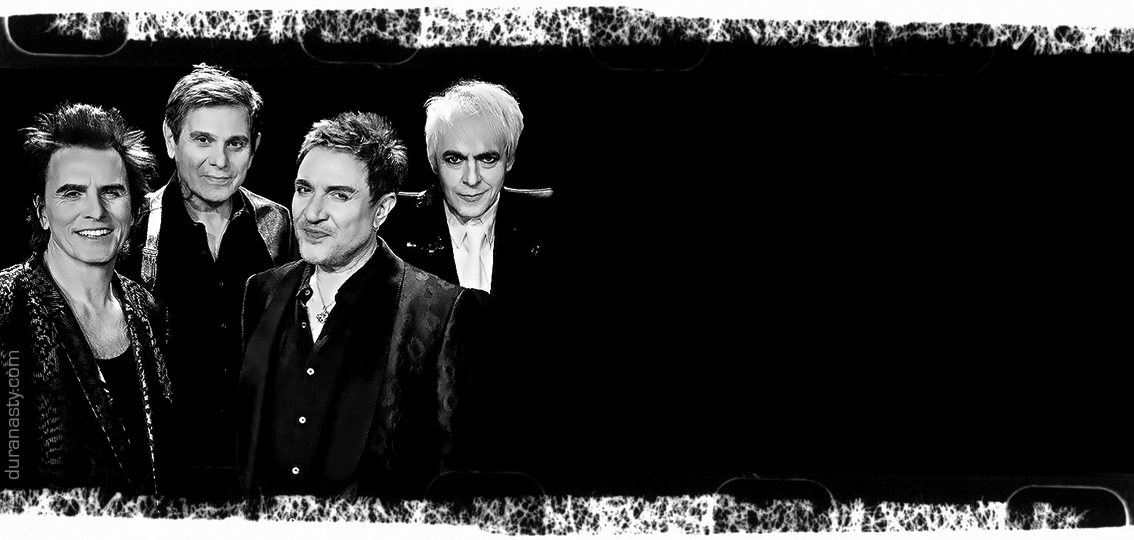
There are a lot of different moods
on the record, different atmospheres,
it touches on Dance music,
quite a lot, Electronic music,
and then there are
some Darker pieces.
Nick Rhodes
“
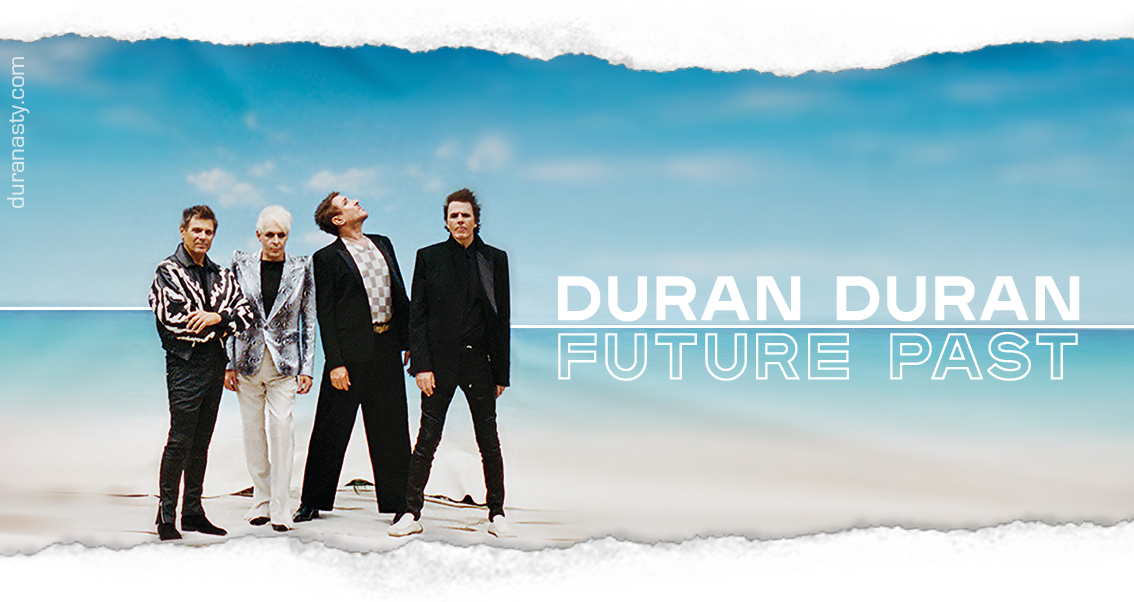
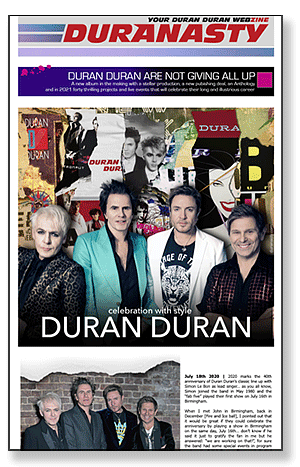
Direction: it's an eclectic album
Working alongside Erol Alkan and legendary producer Giorgio Moroder, the band have also enlisted the help of some of the most exciting names in pop at the moment – including Swedish hit-maker Tove Lo, ‘Queen of Drill’ Ivorian Doll and Japan’s Chai on ‘More Joy!‘; alongside Blur’s Graham Coxon who lends his guitar to several tracks on the record and David Bowie’s former pianist Mike Garson on album closer ‘Falling‘.
Back in September 2018 Nick Rhodes told me [click on the banner on the left to read a previous duranasty.com installment about Duran's 15th album] that this record would see the band heading in a “different” direction. More recently commented on the album sound: “There’s a dance element to it. The construction of it, the melodic content, the lyrics, some of the sounds… they’re very different for us.”
“We always try to move forward in some way,” recounts Nick, “We're never quite sure exactly which path we'll take but we tend to move further from whatever we did the last album, with this record, with Future Past, it's quite eclectic, I think that there are a lot of different moods on the record, atmospheres, it touches on Dance music, quite a lot, Electronic music, and then there are some Darker pieces.”

Studio Dynamics
“We work better when we’re mostly together,” says keyboard player Nick Rhodes. “I sometimes work independently because I have a lot more work to do on detail and there are more layers of synths, but when we’re writing and forming the shape of the songs, we will always work together. It’s only afterwards that we can get out the smaller brushes. Like Simon will go in on his own with the engineer and producer and do all his vocals and figure out his harmonies and things like that.”
"The studio sessions are quite exhausting because we have been down this road. We can finish each other's sentences and I guess,
to some extent, we can do that musically as well.
John Taylor
Future Past is an album "handmade" and "guitary" says Rhodes, who explains the working dynamics in the studio: “John and Roger's rhythm section often drives a track Simon, the lyricist, gives all the songs our identity; it's his voice that tells you it's Duran Duran. My part has more to do with sonic architecture.”
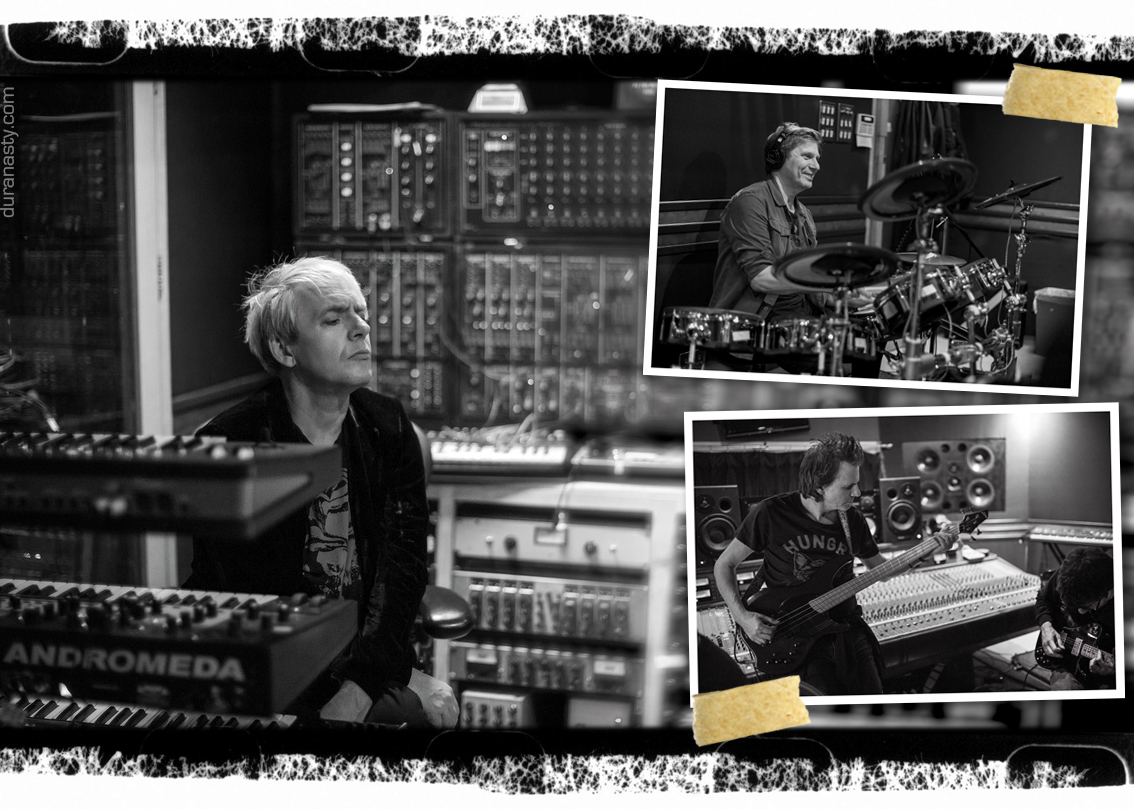
The Sound (of Thunder)
Once the band were able to regroup after lockdown ended, the band returned to the Studios to resume working on the album. “We did the bulk of the album there,” says Rhodes. “The studio had loads of analogue gear and a big analogue desk, a heavily modified Cadac G‑series, which we used for the drums and things like that. There was also a giant Roland System 700 modular synth sitting in the room, which we used on a few tracks in order to run sequencers with which we started writing.
“We usually created an atmosphere by having the studio as dark as possible when we were writing, with most of the light coming from the computer screens. It was a great room to work in at the studio”
Nick Rhodes
“We set up in the control room with Roger playing a Roland TD‑30KV V‑Drum kit. And we had sequencers running from the Roland System 700 while I had four different keyboards to choose from. We had another keyboard on the other side of the room, too, in case somebody else wanted to play. And we usually created an atmosphere by having the studio as dark as possible when we were writing, with most of the light coming from the computer screens. It was a great room to work in at the studio.”
“Because we usually build the palazzo from the foundations up, we’ve got to know what the bass and drums are doing at all times to be able to work around everything else. We often re‑record the bass and drums later if we want to tweak a little bit of something, but we don’t change the rhythm much. If we do change the rhythm, we will then have to rebuild the whole track. John and Roger are a very solid foundation, and I think their work on this album is the best they’ve done in a long time.”
Erol Alkan says: I wanted the sound of live drums across this record, and there are some songs which I feel feature Roger at his best. Recording him in a live room such as the one at Assault & Battery was a huge honour.
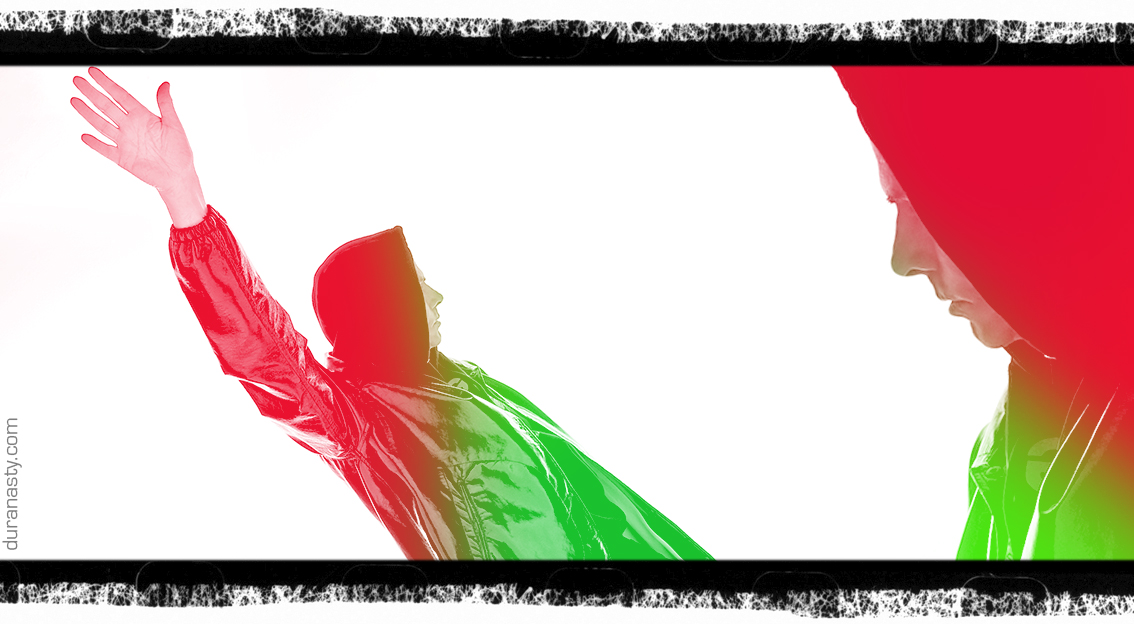
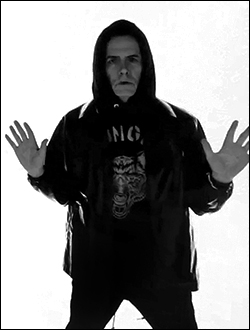
“I am proud because for the first time in a long time you can really hear the musicians”
“We're all trying to figure out where technology begins
and where the artist ends”
John Taylor
“We're all trying to figure out where technology begins and where the artist ends,” reflects John, “I've worked on a lot of projects over the past twenty years. Over time it got easier and easier, and I got lazier and lazier. But "Future Past" is not a lazy album. We really fought technology. Most of all I am proud that for the first time in a long time you can really hear the musicians. If you are interested in it. You can hear Graham, me, Nick and Roger. And I think that has unfortunately become rare now. This is no longer normal in modern music today. It's all so sterile.”
“Future Past is not a lazy album. We really fought technology, it's not audio fast food, you can hear the musicians”
John Taylor
“Today we are in the age of programmed music, most of which is created on the computer,” affirms John, “sounds that are sampled, copied and pasted. It doesn't have the depth that musicians brought into the studio back in the seventies, it's more like audio fast food.”
“I like musical dynamics. I want to hear the conversation between guitarists, drummers and bassists. Or a cellist and violinist. Now I sound like a progressive rock musician from the 1970s. I feel like I have more in common with them than with today's music producers.”
“There was a time when we wanted our albums to be as tight and progressive as modern albums. But in order to achieve that, you have to let go the dynamics of the sound. There is no room for the dynamics with this kind of sound. Not an interesting bass performance, not an interesting guitar performance. Everything is cut and copied. I understand this makes the perfect album for some people today. But for me that's not emotional enough. It's not interesting anymore. I think that with "Future Past" we've returned to a real performance giving more space to the musicians.”
Mixing: Spike Stent
Sound engineer: Josh Blair
Nick says “Mixing is very important to us, I mean all songs live and die by the mix for me, and actually we worked with the master Spike Stent for the last few album; he's just a joy, because he understand what we want to achieve and he makes it better, better and better...”
“Josh Blair and Spike Stent pulls all the sounds together
and give them a cohesive sound”
Roger Taylor
Roger adds “he also put all the things together, because when you work with a lot of different people, you need somebody that pulls all the sounds together, and he definitely does that.”
“Josh Blair is very much the young song hero of this record,” continues Roger, “he's the one that records the drums, he engineers everything, again he pulls everything together, so it got a cohesive sound, we worked with Josh for a long time... Josh is definitely a bit of a genius.”
”There's more space on this record than any other Duran record,” adds Simon, “there's more silence, moments of silence, which gives the music space to expand.”
The album features Barli on backing vocals, she previously worked on John and Nick’s musical. The guys called her again to work on several tracks on Future Past and she had different sessions with Simon and Erol Alkan through 2019 and a few sessions in 2020 too.

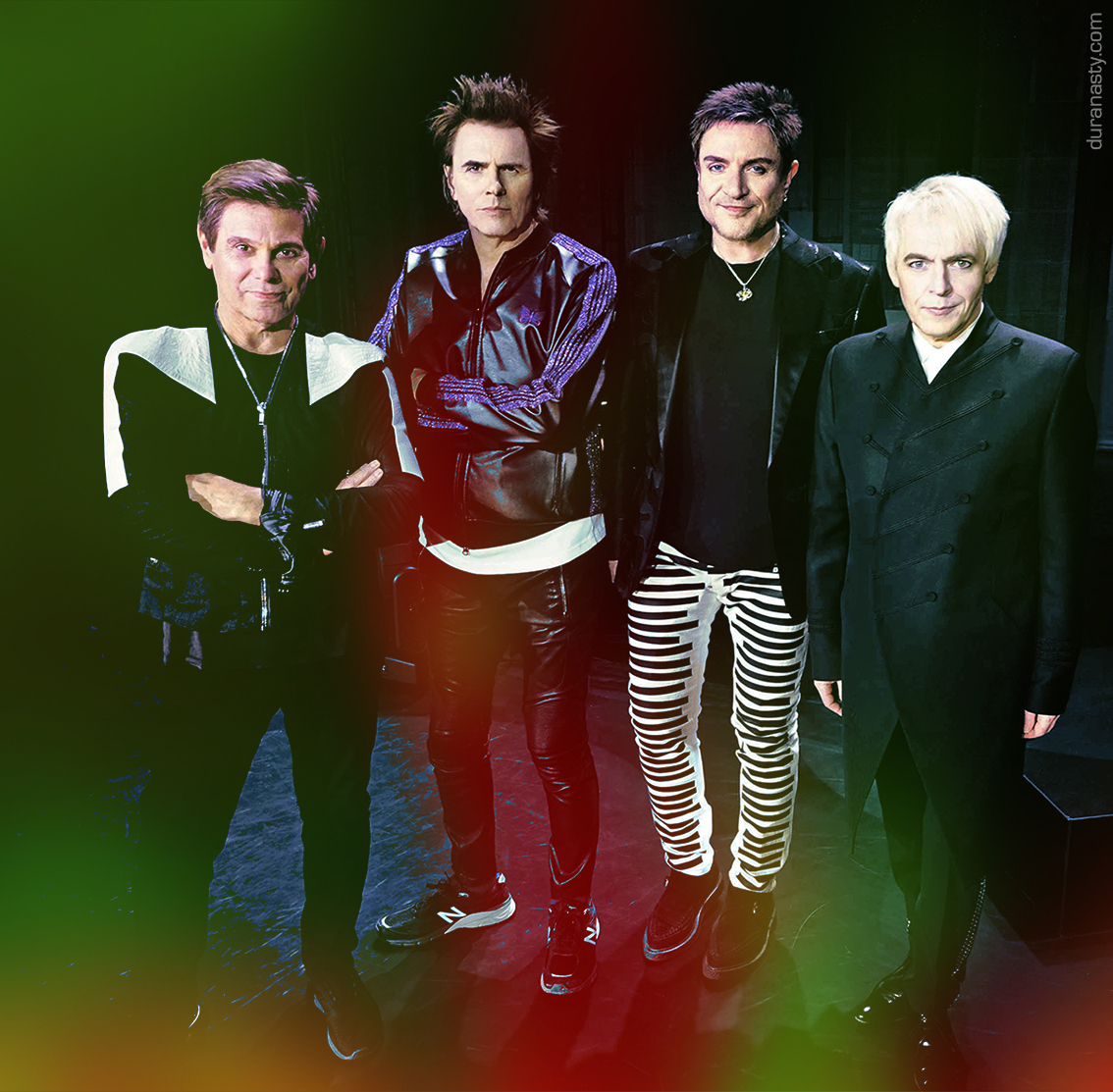
Describe the album in three words:
Nick: "whole new beginning"
Simon: "Big, beautiful, bomshell!"
“This is going to be classified as a 'Covid album', although we started working on it in November 2018, with a view to publishing it in the summer of 2020. But, of course, the world stopped in March of that year, and so we did. Recording this album was a bit like driving at night with the lights on - all you can see is the road ahead of you" says John. "Then you brake, the sun comes out and you see the landscape and the road in front of you again.”
Roger recalls the band pre-pandemic recording sessions: “It’s definitely one of the strangest records we’ve ever made, we thought we had almost finished the record. We had been working on the record for a few months and I know that Erol Alkan wanted this to be a quick album. He wanted it to be high energy, he wanted it to be very live in the way that we recorded it. And he was thinking we could get the whole thing done in three or four months. And then of course, the pandemic.”
“The lookdown had an enormous effect on the record”
Nick Rhodes

“I didn't play the record once lockdown started,“ Simon admits. “I didn't listen to it for six months at least. When I started to listen to it again, with fresh ears, I got it in a completely different way than before.”
Simon felt there were a lot of things that could've been improved on the record, which apparently "became much more obvious" after pulling it from the shelf for a listen. “We had this luxury of being able to step back and view it from a distance and then get back into it. And it seemed like a much simpler job to complete it after lockdown, after Covid because it was much more obvious to us what we needed to do.”
After the lockdown the band could focus on their new songs and make the changes the album needed: “I almost feel like when we started off before lockdown, it was like driving at night with the headlights on," says Simon, “When we can only see that bit of road in front of you. But when we returned and the sun came up, we could see all the country around us and what we needed to do to get to the right place.”
“We came back with renewed energy and renewed focus,
we had objective thinking, which we had never really been allowed before in the making process”
Roger Taylor
“We've been in this marriage of making albums and touring for years. Out of nowhere, we had all this free time and life just got so simple,” Roger recalls. "I had a contacts with just few people - my wife and my 10 year old son - and we couldn't see anyone else. I would go out taking the dog for a walk, going to the market to buy food, we would watch a movie... after the initial shock, I really enjoyed the simplicity of life - at least for a while. It was like going into a kind of meditation.”
Roger Taylor
“Pausing the recording of the band's first studio album in six years was an interesting process says Roger, both musically and psychologically. “Our producer Erol Alkan called us and said he was going to self-isolate with his family and that he didn't know when he would be back. So we had this big break. When we got back to the studio, we heard all the things we had done and had the opportunity to get a very objective view of where we were going. We had a chance to see what was good and what didn't work... In the end we managed to get a great album.”
“I think that the period away from the production allowed us to see the songs in a different way” recounts Nick. “Usually you’re so into the project that you get blind and you keep going forward but sometimes it would make more sense stepping out and try to watch everything from a distance for a bit. The pandemic gave us this opportunity and I think it was hugely beneficial for the end result. So, if we could I would love to do that on every album.”
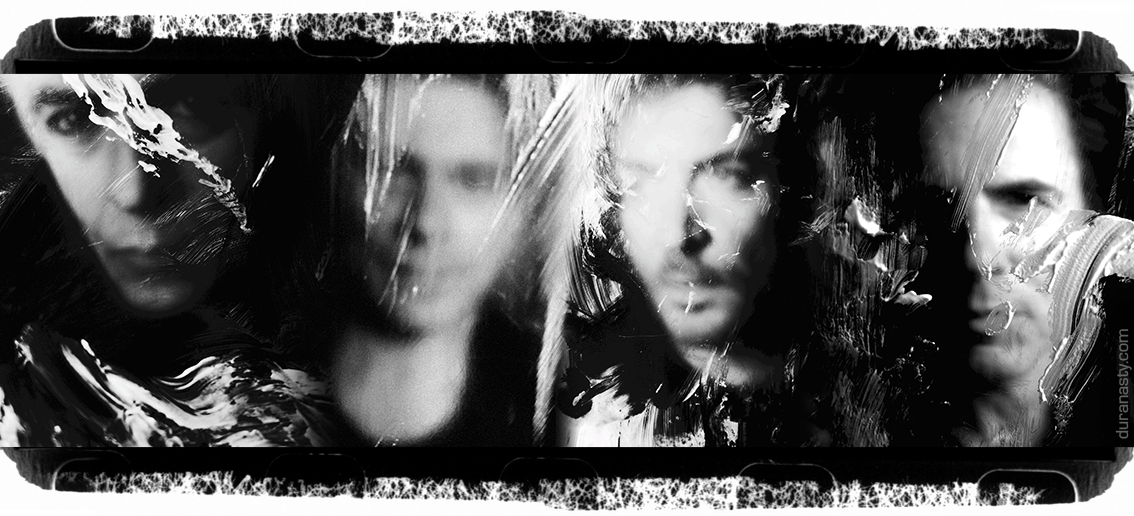
John recalls: “when the pandemic exploded, we closed the studio so everyone could go home. We stayed away from the studio for nine months, we almost didn’t talk or listen to the music during that time, we’ve never taken a break in the middle of an album. Who would do that? It was a forced pause.”
“Trying to record the album in the tense time before lockdown left the band on edge, says John to The Mirror: “We were at each other’s throats, we were all stressed out of our minds and in the end had no choice but to close up the studio and go home,” he revealed. “We weren’t really talking but just sitting around in our spaces.”
“As lockdown eased any differences were settled, there was this tremendous sense of ‘we have to do this and get this finished’,” John said. “We were lucky to be alive...we were so happy to see each other.”
“A lot of the songs seemed in tune with the times. 'Tonight United' speaks to the pandemic, 'Future Past' speaks to the pandemic,
and they weren't written post-pandemic”
John Taylor
“That break was challenging”, John continues “without knowing when we could come back into the studio, as nobody knew how things were going to evolve. Everyone's life was at stake and everything was uncertain.
But when we came back we thought the album sounded fucking cool, says John, and ‘Invisible’ in particular sounded like if we had just finished writing it.”
“In March last year, before the pandemic, we were on course to finish for a June release. But we were hanging on by then, ready to kill each other”
John Taylor

The lyrics
Lyrics are about growing up and realising the mistakes I've made.
It's about living life, seeing that it's not perfect, but trying to make the best of what you've got”
Simon Le Bon
“While the guests brought magic and new dimensions,” says John “the conceptual character of the songs was defined by Simon Le Bon with his lyrics. Simon says ‘This song sounds in a way that invites me to talk about this or that’ and revelations of that kind make us say 'wow, you're right' ”, he claims.
“It's amazing that at this point in his career, Simon decided to go deep into his long relationship while writing the lyrics. The lyrics are very intimate, they have gloom and emotion” John continues.
All his bandmates separately rave about Simon's lyrics on the album which are among the singer's most personal. "I don't like explaining my lyrics," Simon says. “Those lyrics are my autobiography — or my confession. However oblique they may be at times, they're the truth.” But Simon is willing to disclose that he found the lengthy Paper Gods tour tough, adding: "I felt changed by the end of it. Those lyrics aren't a grand review of my life, but they are about growing up and realising the mistakes I've made. It's about living life, seeing that it's not perfect, but trying to make the best of what you've got."
John: “Future Past” is a very emotionally deep album. There’s not a lot of faff on it. Most of the lyrics were written before we went into lockdown. Many of the songs are about emotional crises, or long-term intimacy issues, let’s call them. When we came back after lockdown, I felt that those lyrics, particularly “Invisible,” spoke to the moment, because the last 18 months have really been about intimacy politics.
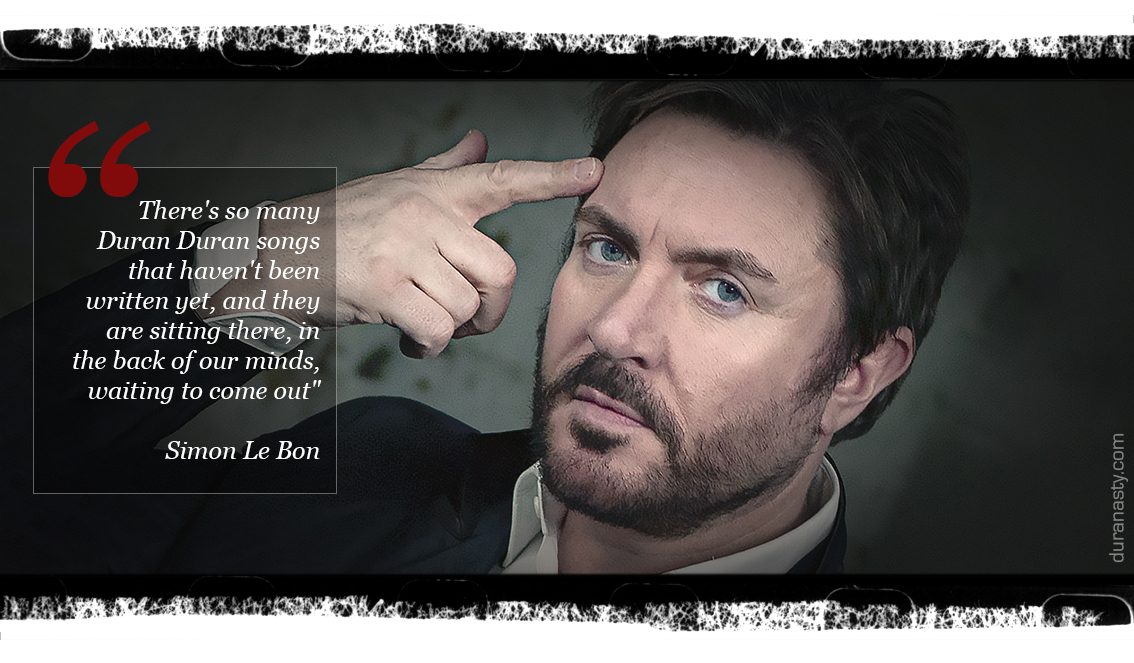

“I think I’m less of a fantasist now. I think my lyrics are more about real things. I’ve lived more, so I’ve actually got more to write about.
I don’t have to make it up so much”
Simon Le Bon
“We thought we'd kind of finished the record after a few months,” says Roger, “and then we had to go into lockdown like everybody else and I think this gave time to Simon to really look into himself and become really introspective. And I don’t think we’ve had that for a while. I think he’s written some amazing lyrics on this record.”
“In the post-Corona world, many lyrics work well on
a general level as well. All people have similar experiences.
We have experienced isolation and loneliness”
John Taylor
“I think these are some of the most personal lyrics Simon has written, on this album,” John notes. “There are a lot of threads on Future Past about shared history, shared time together, intimate time together and the positive and negatives of that, just trying to hold onto something. It’s about relationship, politics and particularly long-term relationships and these lyrics seem to speak to the lockdown experience in a way.
If we’d have just stuck to the old party vibe, the Duran Duran girls thing, it wouldn’t have been the same. I was very happy at how a lot of the lyrics didn’t sound tone deaf. They work right now.”
Simon confesses to castanet.net that he and Nick often clash in the studio: “Me and Nick are often at loggerheads with each other. We're quite different people and we like different things... "I guess because I'm writing lyrics and Nick feels that those lyrics speak for the whole band, he likes to have an opinion. Sometimes I wish he wouldn't have a f**king opinion, but he does.”
"I've come to know that when he really cares about something, he's got a point. He represents a certain way of thinking, and if you don't appeal to that kind of thinking, as well as my kind of thinking, then you're going to lose touch with some of your audience.”

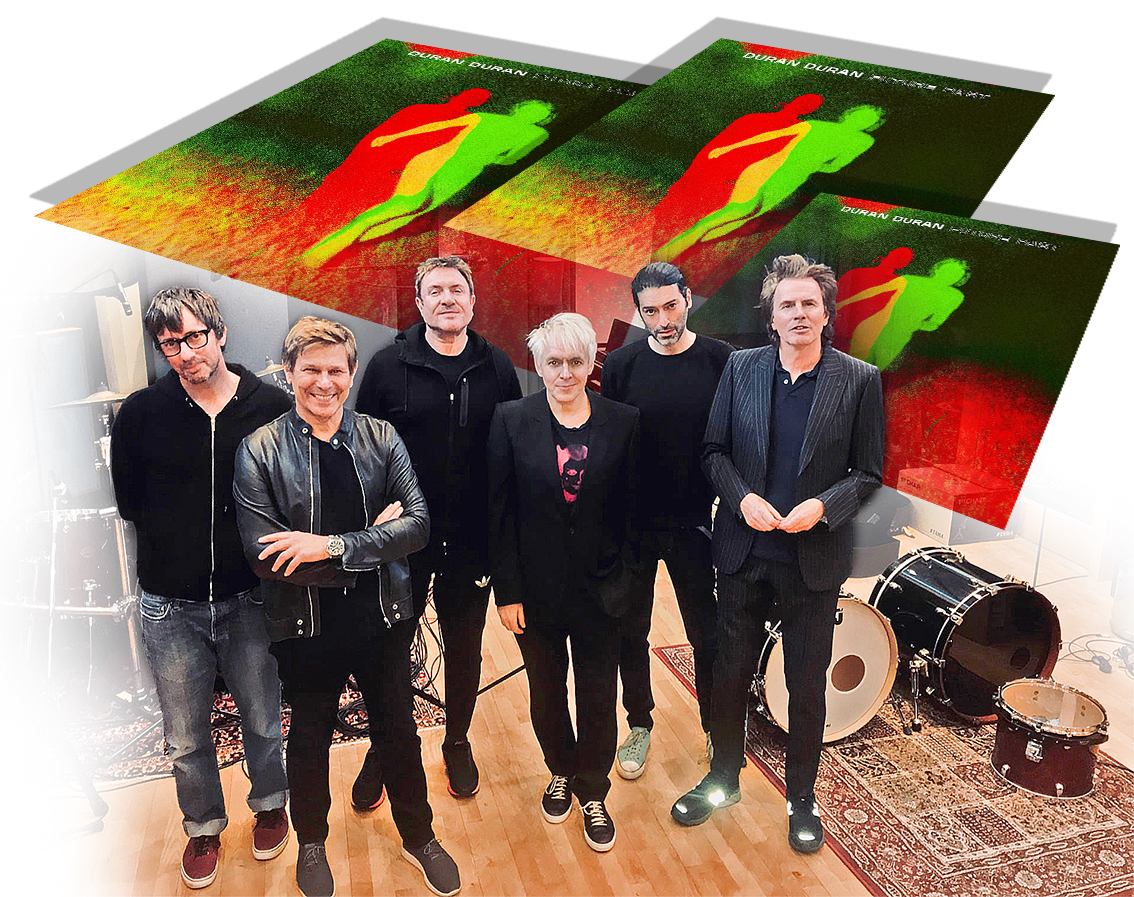
At the end of the sessions Alkan said: “We've spent the last 2 and a half years working on a number of songs which for me embody the spirit and dynamic of the Duran Duran as I know them now, or as I remember them whilst growing up”
It's like a Soap Opera
(The life and times of duranasty - Ed.)
“You have Roger, Nick, Simon and me. We are the brain” says John, “We keep the flame burning. But every time we work with others they bring new colors and a new flavor. They make the difference between this album, the one before and the one before it. We became very good at finding the right acts for our projects. New looks and new styles with very different perspectives.”
“The studio sessions are quite exhausting because we have been down this road. We can finish each other's sentences and I guess, to some extent, we can do that musically as well.” says Nick. “We are working with the same cast; it's like a soap opera. That's why collaborators become so important as you need to keep the spirit lively.”
“We know each other, personally and creatively, very well," says John. "We've been making music and art for 40 years. So for us, the people that we bring in individual projects, such as our producers, our engineers, our musicians, are so important to us. They invigorate the project in a crazy way; it keeps us vital.”
For Future Past, Duran Duran worked with three new collaborators. The first is Erol Alkan, the British producer/DJ primarily known for his remixes of recordings by Death From Above 1979, Tame Impala, Bloc Party and Hot Chip. “At first, we thought we'll just try him for a few days because he really came from a DJ background,” says Roger Taylor. “The energy he brought into the room was just on fire. He really brought something amazing out of us. We definitely still got a foot in the dance floor because that's where Erol came from.”
The band has enlisted the help of some of the most unexpected and inspiring names in pop, including Multi-platinum Swedish hit-maker Tove Lo, ‘Queen of Drill’ Ivorian Doll, and Japan’s Chai on ‘More Joy!’. In addition, Blur’s Graham Coxon co-wrote and lends his guitar on most of the tracks on the record, and David Bowie’s former pianist Mike Garson adds an exquisite sonic layer to album closer ‘Falling’. The record, which was recorded across studios in London and partially in LA, also features long-time collaborator Mark Ronson who co-wrote and played on ‘Wing’, and was mixed by Mark ‘Spike’ Stent and engenired by Josh Blair.
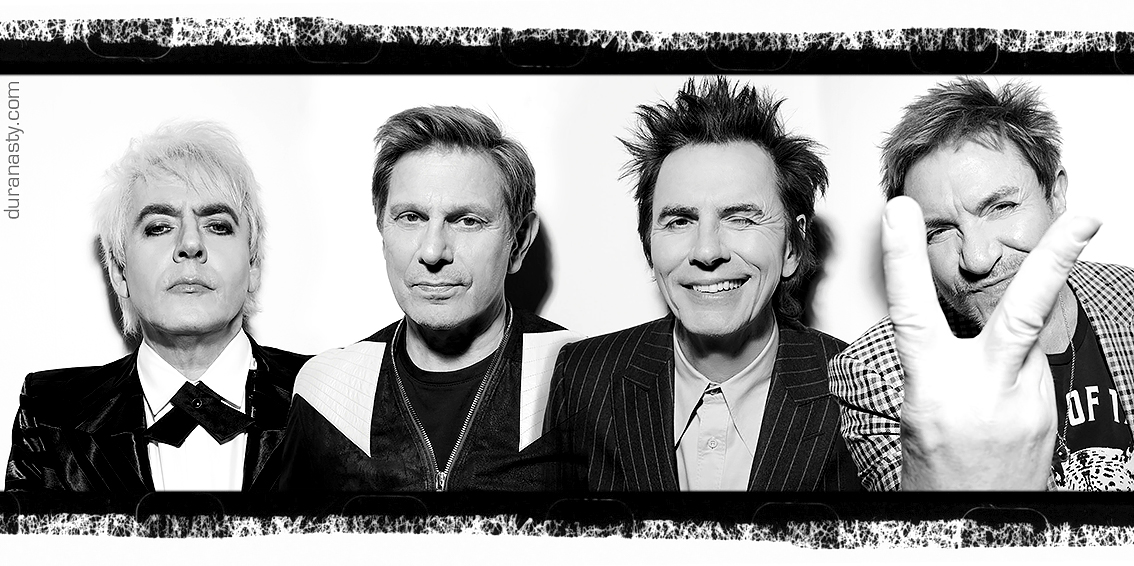
“Never in a million years would I have imagined collaborating
with Chai or with Mike Garson… we just had things on the radar
and we captured them on this record ”
John Taylor
“We knew exactly what we wanted, and we got it. Each of the collaborations was important.” Among all, the one that left its mark - according to Nick, is the collaboration with Moroder: “It was a dream from the beginning of our career. He's the man who changed dance music forever.”
John describes their different approach they had in the studio: “The two producers we had couldn't be more different. Erol tried to reinvent the band, dealing with what Duran Duran would sound like in 2021. With Giorgio we knew where we wanted to go and we were very respectful.
With Erol, it was intense; with Giorgio, easier. With Erol, who produced most of the album, we tried to redo the band's sound, the songwriting process. I'm talking about sound architecture, the way we made the rhythm sections, the way we sculpted the sounds of keyboards, guitars. Songs like ‘Future Past’, ‘Anniversary’, ‘Invisible’ are the result of this encounter. But with Giorgio, who arrived at the end of the recordings, no. He came with his little briefcase, plugged everything into the keyboards and played. So much easier. And they were songs that came with a different mood, less stressful and more fun.”

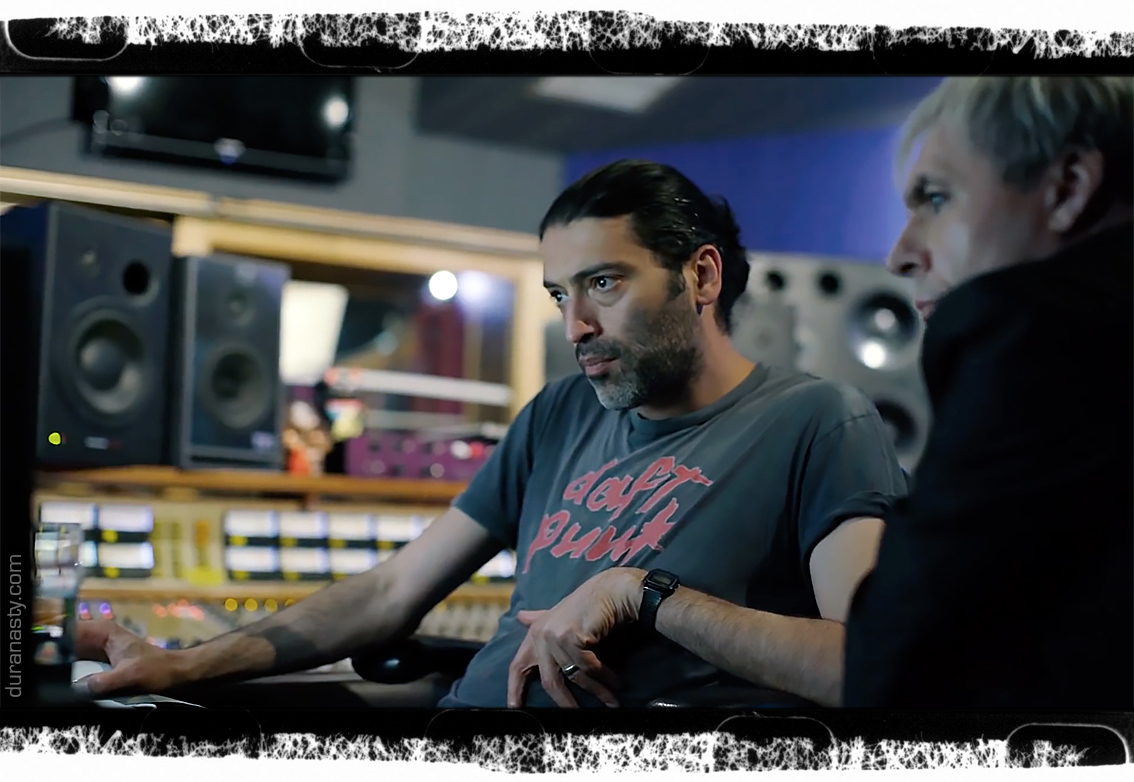
“Working with Erol Alkan was “like hallucinogenic drug had been let loose in the recording studio”
John Taylor
“The main producer on the album was Erol Alkan,” says Nick, "who we’ve never worked with before. He comes from a sort of indie and dance background and is a great DJ with a phenomenal knowledge of the history of music. I think his brain can only be rivalled by Mark Ronson’s. Between the two of them, you can name a track as obscure as you like, and they will know it. I find that quite inspirational. More than anything, I think Erol brought energy to the project, which was infectious, and it really helped particularly with the bass and drums.”
“I'm really happy with Future Past and our work with Erol Alkan, which we knew little about before” says John. “When he came to us he didn't have much to show as a producer. He is better known as a DJ and curator. I knew he had exceptional taste and energy. I didn't know what he was going to bring into the studio.”
“Erol was our wild card” continues the bass player, “It was the complete opposite of what I expected. I've got used to work with producers from the DJ generation. I was surprised to see how much time and care he took to himself for the bass sound, the amplifier sound, and aligning the microphones correctly. He did this with all instruments. From the beginning of the work he showed a great acoustic awareness. That sends a signal to the musicians. This guy is serious. As a result, he kept pushing me forward as a bassist.”
“Erol turned into Captain Kirk. He took us on a journey. He wasn’t afraid to really push us and said we needed to be pushed — we are lazy as f***!”
John Taylor

John continues: “it’s a very personal album, it’s quite difficult to say that because I’m the bass player, but it really is. People think 'How does a personality express itself in contemporary music? It’s probably through the vocals and the lyrics' one would say. But we were blessed to have Erol Alkan, who had a very classical approach to production on this record and he took hours getting the bass sound, took hours f**king beating the s**t out of me, getting bass performances out of me, wasn’t interested in any shortcuts. He did the same thing with the drums, with the guitars, it was painstaking. It was painful half the time. But, if you so desire, to be able to immerse yourself in the music, and actually hear Graham Coxon and Nick Rhodes and John Taylor. Actually being able to hear that in the music, that’s not easy today, that’s like progressive rock. And actually, I don’t even mind using that term progressive. It is a progressive pop rock record, and I think one of the reasons is because you can really hear what the individual musicians are contributing and I feel that’s happening less today.”
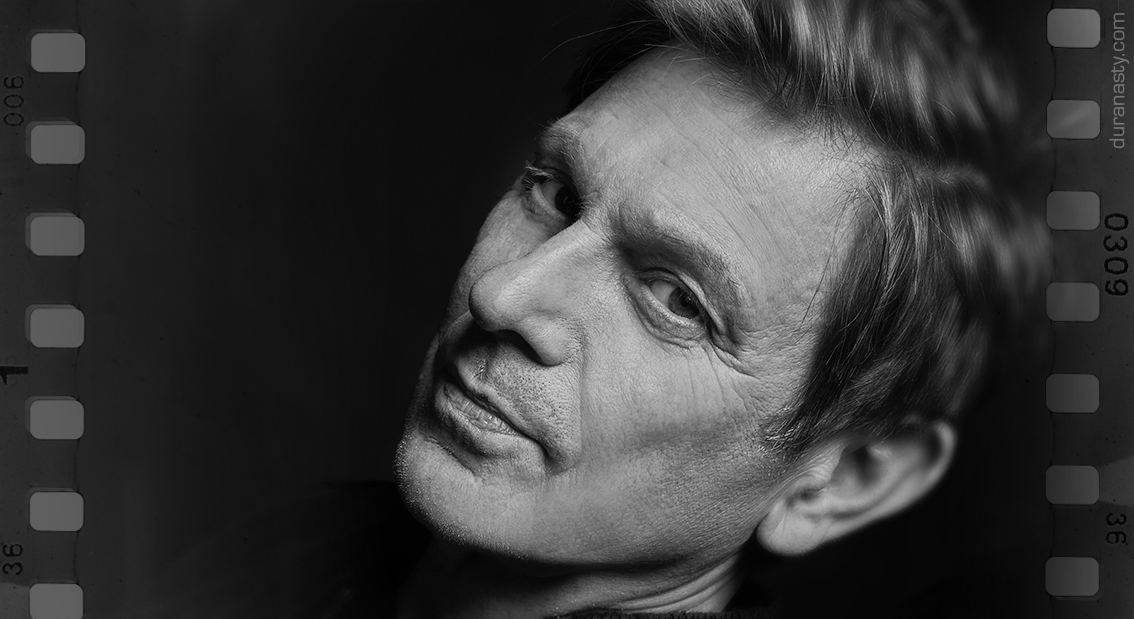
“He told us to forget technology for a little while and get in a room and play together. And that’s how we wrote this”
Roger Taylor
Roger admits that Duran needed someone like Erol because he had vision for the band sound. “A producer has to be really strong working with Duran Duran," laughs Roger. "We all think we know how to do this and that. Everybody has their own idea of how the music should sound. We always need a captain at the helm to guide the ship. If someone from the outside doesn't have an overall concept for the sound, we can get diverted into all kinds of different directions. That might still be a good album, but it wouldn't have the direction we've achieved on Future Past.”
“The first 12" I bought was 'The Reflex', I have incredibly lucid memories of the songs from around 1982 to 1987, they are a part of my musical DNA and have been an influence since. I was also a huge fan
of 'So Red The Rose' by Arcadia”
Erol Alkan
“One of Erol Alkan’s visions was to go back to that live feel we had on the early records” recounts Roger, “He particularly loved the early 12-inch records because we couldn’t cut and paste in those days. Erol came in and said, ‘I want you to go back in a live room and play the way you used to play together’. “He wanted the feel of our early 12in records, which he’d been playing in the clubs for years. So he’s kind of responsible for the sound on the new album.”
“Erol is the only person I’ve met who would give Mark a run for his money knowing the history of music and being such a big fan of the band” continues Nick, “John said it was like having this live, hallucinogenic drug in the room with you, in the most positive way. He would remember 12-inch mixes of our songs that I didn’t remember we had done and would say, ‘I love the snare on that song – Roger, can you do it again?’ or ‘How did you play bass on that song, John?’ I think we were rather fond of his obsessions with things because that’s what we’re like.”
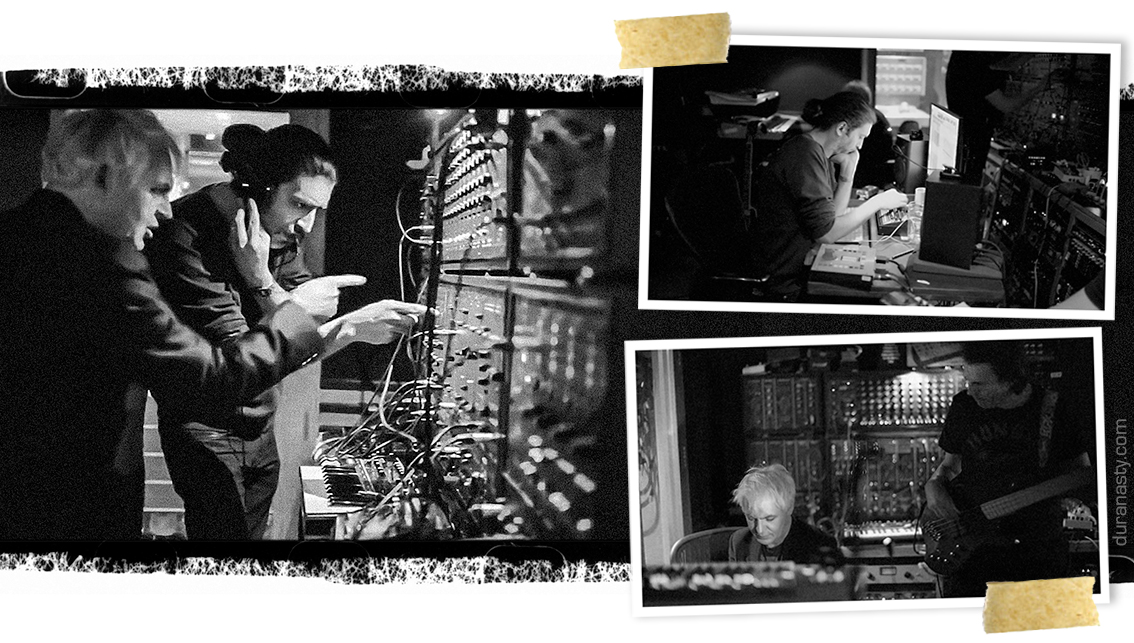
Early Alkan sessions
“Erol was the first to show up at the studio”, John recalls. “We met him and all I knew about him is that he had an exquisite taste, he made several albums that I like but I was really captivated by his energy, I loved his vision, he suggested Graham Coxon, such a great guitarist and we just loved the idea! We started working with Erol and Graham, and I think the collaboration with them represents the skeleton of this album.
“That's how this project started, so natural and organic”, John continues, “Erol's approach to the recording was very ‘old school’ despite the fact that he comes from an electronic music background. We are probably more concerned now with these issues than in our first records. Everything that Graham contributed to is very interesting and exciting. He gave us the feeling that we were facing something very good.”
Having spent several days in the studio with Erol Alkan, Duran Duran had written about 30 pieces of music for the album. "[Erol] brought so much energy and intensity into the room that we just we went onto a roll," drummer Roger Taylor recounts.

“He was really passionate about our songs. It's important to have someone else outside the band who cares as much as we do about the project... he brought creativity and enthusiasm.”
“Our producer Erol Alkan encouraged us not to being afraid of who we are. We probably spent a lot of time running away from ourselves, trying to say we were contemporaries or sound like this or that. But Erol always said just be Duran Duran. We made this album just as we did in our early years, with drums, bass and live guitar... the recording process was much more organic. When we play together you can hear our personalities and we are all recognizable”.
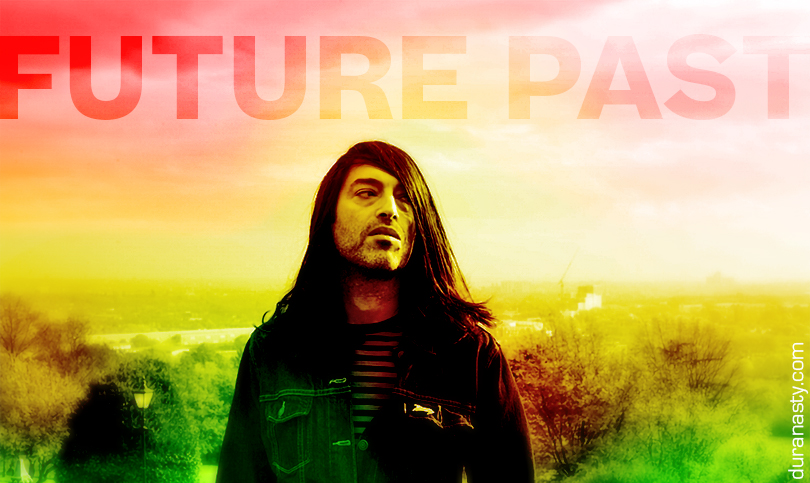
On the day the album was released Erol said on his socials.
It's 1984. The 10 year old me had a routine just before I'd go to sleep, and part of it was to listen on headphones to the handful of records I owned on an Amstrad hi fi I had in my bedroom. One record in perticular felt and sounded so different to the rest. The first 12" single I bought with my own money was the extended mix of Duran Duran's 'The Reflex', a heady mix of clashing / stuttering rhythm, alien sound and cryptic lyrics... it felt then as if it was a riddle hidden inside of a pop song, but now I view it as a piece of sonic modern art. But back then I had no idea what I was listening to, but I knew I loved it.
The impact of pop music was for me like watching a film on the biggest screen possible, it felt overwhelming, distant and remote, I had no clue how it was made or where it came from. Melody became the most powerful force in my life, ahead of television and books. I was hooked.
Fast forward to the present day, and this path has now lead to me produce one of those bands who informed part of my musical DNA in those integral years. Duran Duran and I spent parts of two and a half years in each others company, writing and recording the album which is released today, 'Future Past'.
I'm happy that I didn't bottle it when I was approached to work with them, some poeple say you should never meet your heros but I don't agree with that. John, Simon, Nick and Roger were everything I had hoped for and more. it was also a joy to work with Graham Coxon, Mike Garson, CHAI, Tove Lo and Ivorian Doll. Shout out to Barli and Saffron Le Bon who also leant thier voices as bv.

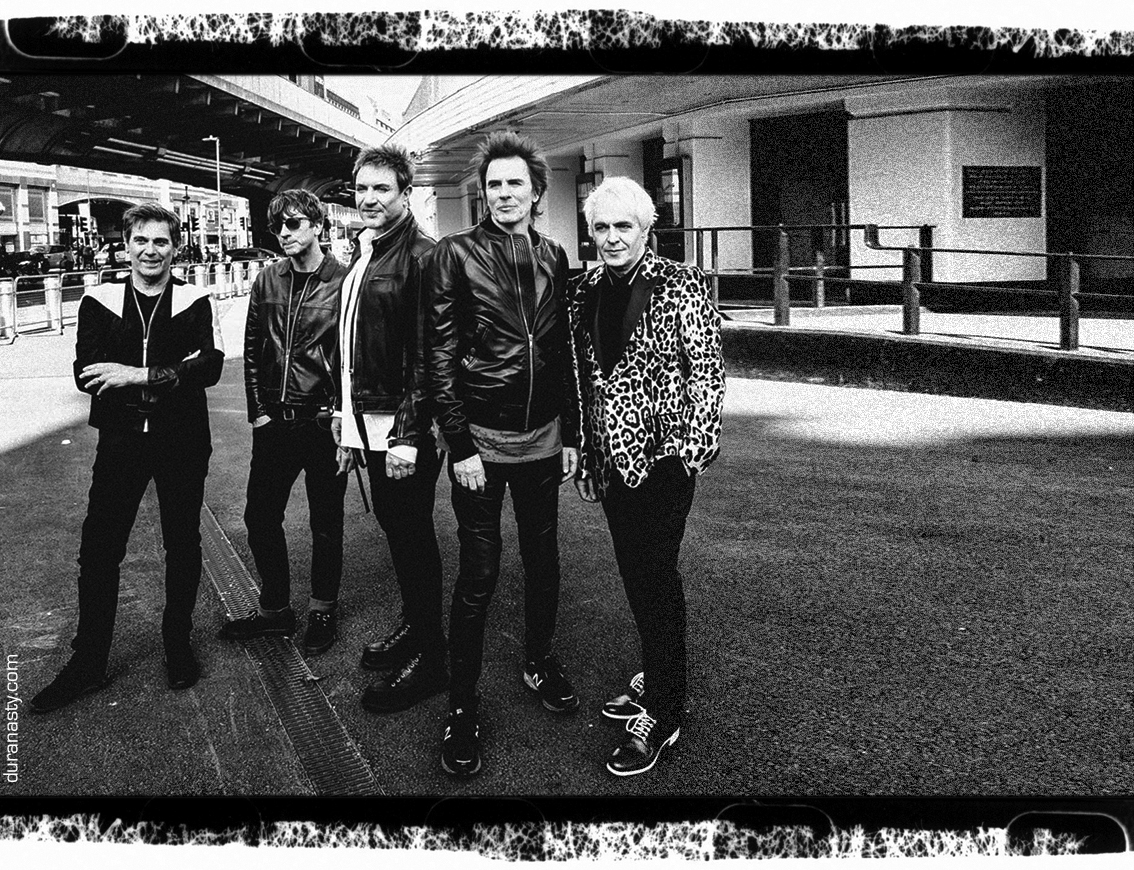
Someone asked Graham about his collaboration with Duran Duran and he said: “It's fun! Not too different to Blur weirdly... they are neat blokes!”
“it was was wonderful to work with an innovative guitarist again.
We hadn't done that for a long time, maybe 10, 20 years”
Simon Le Bon
For Future Past, one of the key collaborators was Blur's Graham Coxon, who co-writes as well as plays on the whole album. “We've tended to neuter guitar players recently,“ admits John. “Every guitar part was cut to the grid, but you just can't do that with Graham. On this album, the guitar isn't hemmed in, as Graham's playing really roars.”
Nick adds: “On Paper Gods, John Frusciante was amazing, but he did everything remotely. It was time we had a guitarist writing in the room with us again, which hadn't really happened since Warren Cuccurullo was in the band.”
Graham Coxon, who plays guitar on nearly the entire album “is just a monster musician” notes Nick. “This freedom that was given to the band by accident or by chance, with Andy not being there, I think it really allowed us to experiment more and broaden our horizons. It’s the first time in a long time that we got back to that sound again, where guitar and keyboard play more together.”
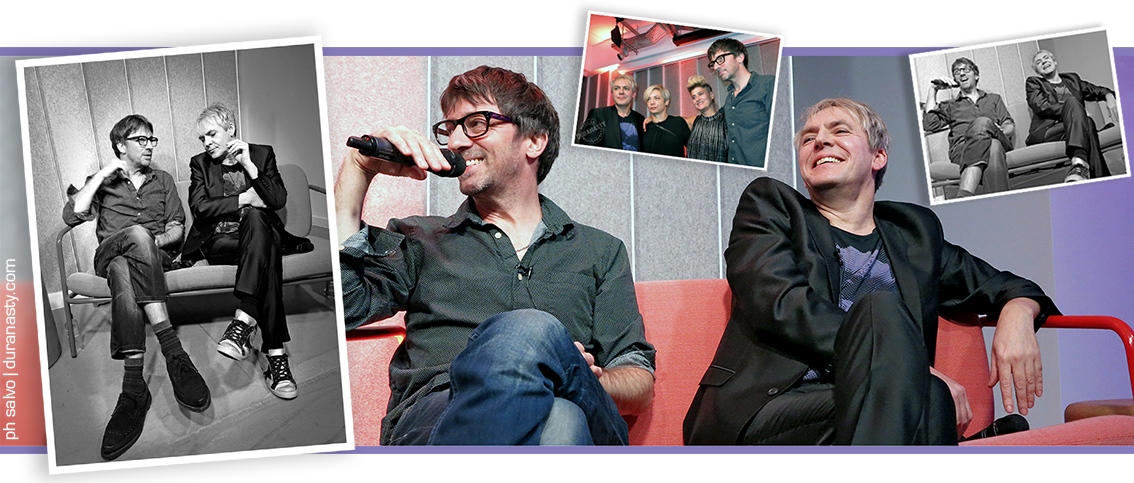
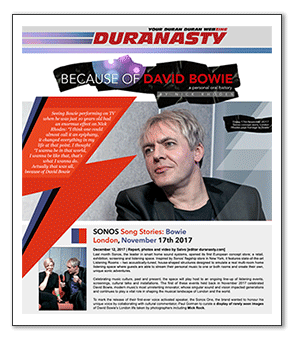
It all started with Bowie...
“Graham I were both on some panel we'd agreed to do about David Bowie,” Rhodes recalls [check our report by clicking the banner on the left] . “We got chatting and got on very well. I said, 'Look, if you fancy coming and playing on a song, then let's have a chat when we're doing the album.' I think Graham ended up playing on everything on it aside from the two Moroder tracks.”
“As I recall, we were working with Erol and he said, 'I would like to invite Graham down to the studio for a couple of days,'” says Roger. The connection was partly thanks to Alkan, who also turned out to be Coxon's neighbor. “I don't think any of us knew how creative he's as a player,” Roger continues, “He played on a lot of the record and took it in a different direction. He was so great to work with, so humble and so talented. Thank you, Graham!”
“We have a tendency to be very controlling, particularly with very noisy guitar players. We suppress them and, before you know it, they just sound like a keyboard part! We couldn’t do that with him — you just had to let him roar. And it was quite surprising because we all loved it. It was electric” says John.
Duran Duran have not had a full-time guitarist since the departure of Andy Taylor back in 2006. “We have a tendency to kind of subsume guitar players, we cut and paste them till they're dead!" continues John. “And Graham just couldn't do that. We had to let him roar. What he was doing was too good.”
“I always loved the guitar” says Nick, “Sometimes I think people think that because I play keyboards, I don't like guitar, that couldn't be further from being true! I think there's nothing better than a great creative guitarist. I grew up listening to Mick Ronson, and Phil Manzanera of Roxy Music, and of course Nile Rodgers and Chic, and all that stuff still resonates with me.”
“I met Nick and he mentioned that Duran Duran might be going in the studio 'you reckon would be fun to come and leave some guitars?'
And I said yeah probably would be!”
Graham Coxon
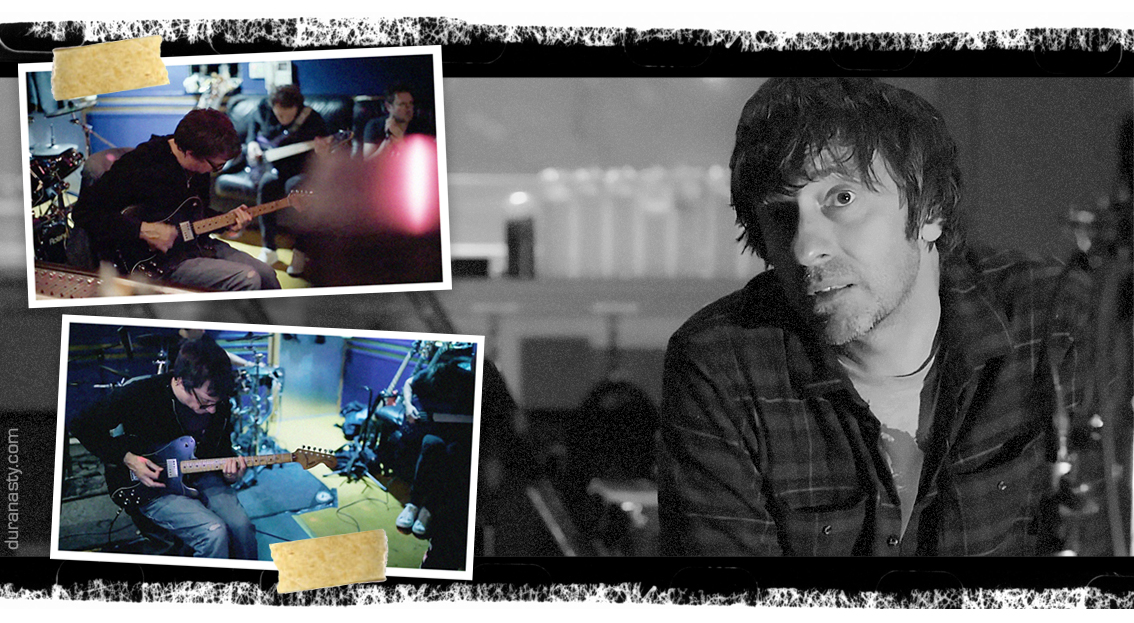
“He’s the first really creative guitarist we’ve had from the very beginning of a project in the studio since Andy Taylor,
and he’s got such a strong style”
Simon Le Bon
Simon says that Coxon has “given so much life and surprise to the music. He came in and he blew us all away, his determination to not do cliched work is amazingly inspiring. You can tell when somebody has got real commitment to the project because they bring good ideas. And Graham played great guitar and really demonstrated his commitment. And for us, it was was wonderful to be working with an innovative guitarist again. We hadn't done that for a long, long time, maybe 10, 20 years. No, since Andy really. That was the last time we were in the studio with a really innovative guitarist."
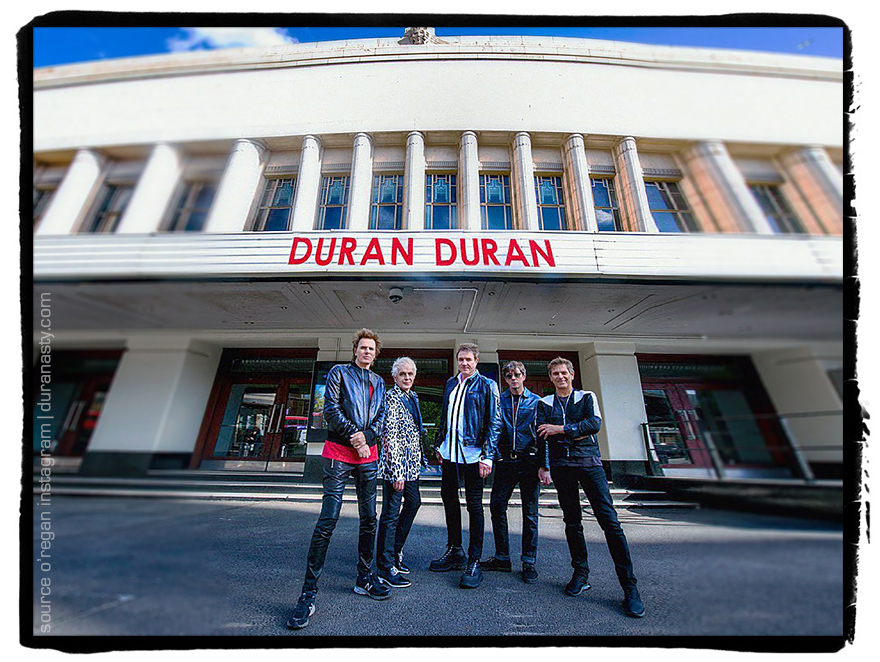

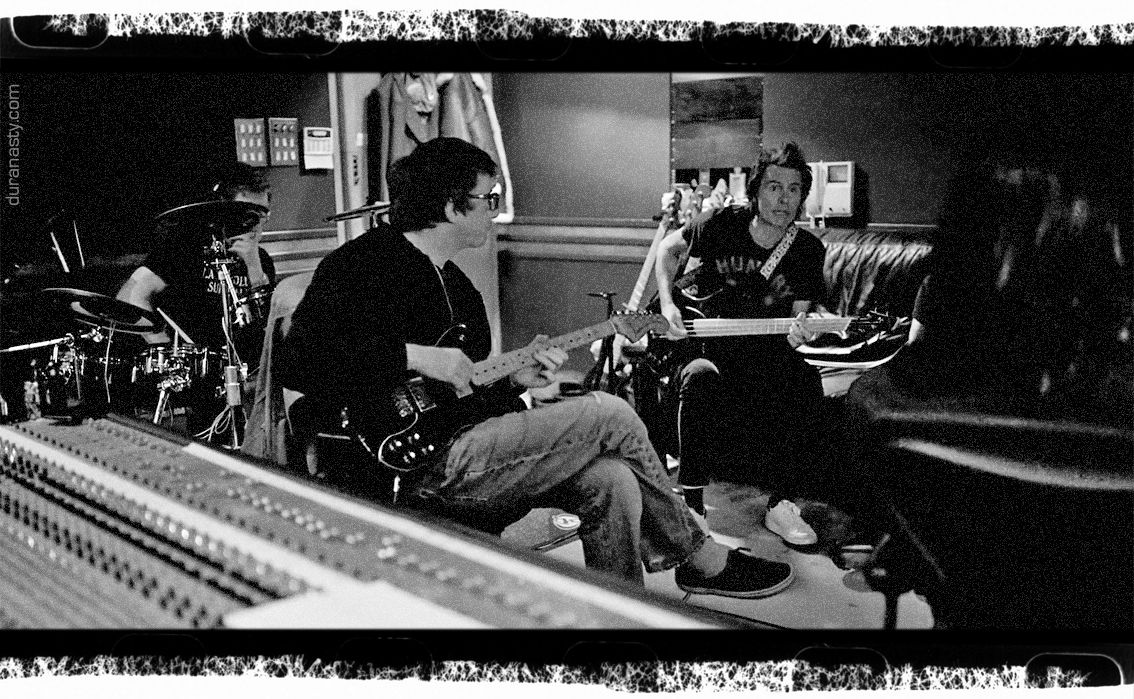
Graham was the prize in the room
John: “We’ve all got man-crushes on Graham,” Taylor says. “The original members of Duran, we’ve been around the block a few times, we’ve written so many songs together, that for us, when we embark on a new project it’s really important to have some fresh legs. We defer to them, they become the most important people in the room for us. Graham is one of the greatest living guitar players, he’s amazing. I really missed Andy,” continues John. “Warren was extraordinary, and we were lucky to get Warren, for him to step in. But after that, it was like the guitar player was the empty chair.
And I’ve actually come to really appreciate it, because we get to fill that empty chair with a different musical voice on every session.”
“[The guys in the band] are my brothers, and I’ve got so much respect for what they all do and how they go about their business creatively,” Taylor continues. “But they rarely surprise me. And I’m sure that I rarely surprise them. So when you’ve got an engineer, a producer, a musician in the room with you, they’re going to be playing something that is different, and we’re all going to go, ‘Whoa!’”
The “Whoa!” this time around comes in the form of Graham Coxon,“He was like the prize in the room,” said Taylor to pleasekillme.com. “He’d start playing, and we’d all be like, ‘Oh, wow! Listen to what Graham’s playing! Let’s follow Graham!’ Follow Graham, because you can always go back to what you do…and you will. And that’s kind of that to some degree what keeps us fresh and what makes the albums different. And by being different they become interesting.”
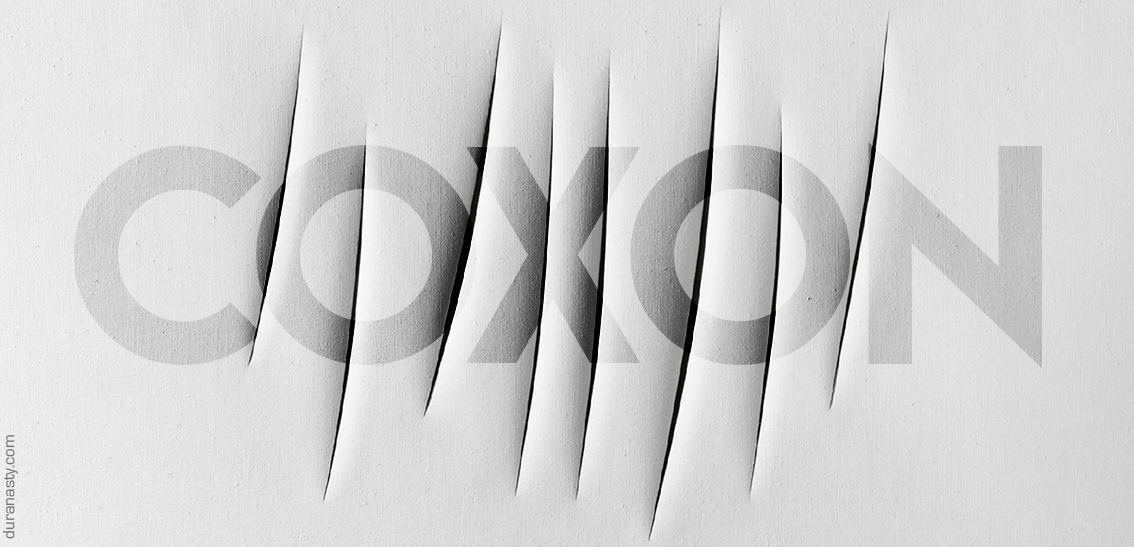
![Cutting edge guitars like Fontana's cuts on canvases Graham Coxon had the same attitude towards us that Lucio Fontana [the great Italian artist Ed.] had in art with his famous cuts on white canvases. He was able to break some of our borders that were immaculate. He dared to go further, you know, not only the physical presence, the technical skills, the intuitions ... but above all the personality, and Coxon has personality in spades.” Personality How was Graham able to cope with 40 years of Duran Duran in-jokes in the studio? “Amazingly,” says Roger. “We've played together for decades, so it must be a tough room to walk into. Graham has been a pop star himself for 30 years, so we didn't know how much ego he'd bring with him. But he was humble and funny, a lovely guy. He's the perfect Duran Duran guitarist, because as well as his own talent he can morph into playing like all of David Bowie's different guitarists. Graham can give us a bit of Robert Fripp, Mick Ronson, Nile Rodgers...” “While making the album it felt like he’d been there forever. Graham is one of the most creative British guitarists of his generation, and he fit like a glove” Nick Rhodes “When we all got into the studio together his energy and his inventiveness really worked with Duran Duran, and his personality. He sort of fits in, he’s like us.” “We’re a pretty tough room to walk into, because we can virtually guess what each other is thinking. But Graham fitted in straight away and was able to join in dictating the direction of the songs. “Being in a British band like Blur, Graham is used to all the jokes. With British bands, it’s constant poking and prodding. You’re either the centre of a joke or coming up with one.” “Graham is a very unassuming character, he’s very droll and very low-key – very f-cking low-key – but plays guitar like a chainsaw” says John. He’s a very, very nuanced guitar player; he’s like a delicate chainsaw, you know? We just loved his playing style, and typically we hadn’t had that kind of a guitar player in the room with us in a long, long time. We just had to let it roar.”](images/u3603-30.png?crc=488655904)
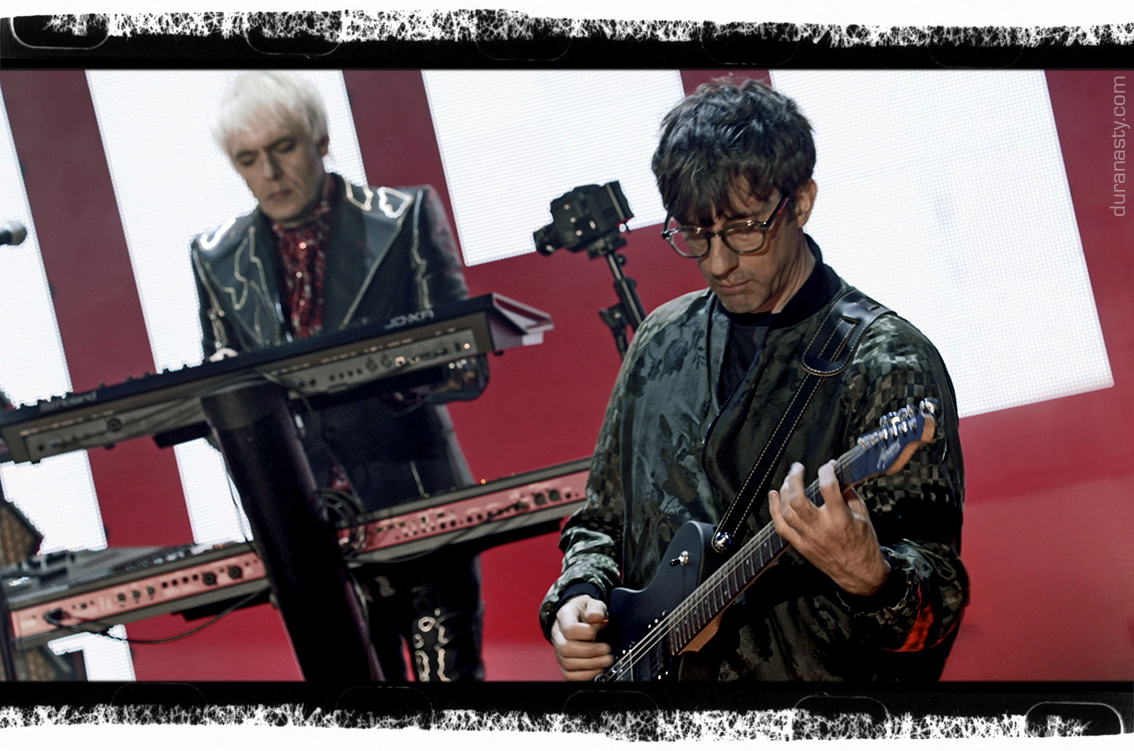
![Touring with Duran? On recent interviews, both Simon and Nick said they would like to have Graham touring with them. Below two excerpts from recent interviews. From Billboard italia: He's not just a guitarist but a co-author: in practice the fifth Duran Duran? Le Bon: Let's say yes… and we hope he comes on tour with us. [...] “Blur were one of the most decisive bands ever in English music, says Rhodes. They had an influence that reminds me of other fundamental bands like the Kinks. Perhaps this is why Graham Coxon is the first guitarist we have involved in song writing since Warren Cuccurullo. And he will also be on tour with us.”](images/u3020-13.png?crc=340194948)

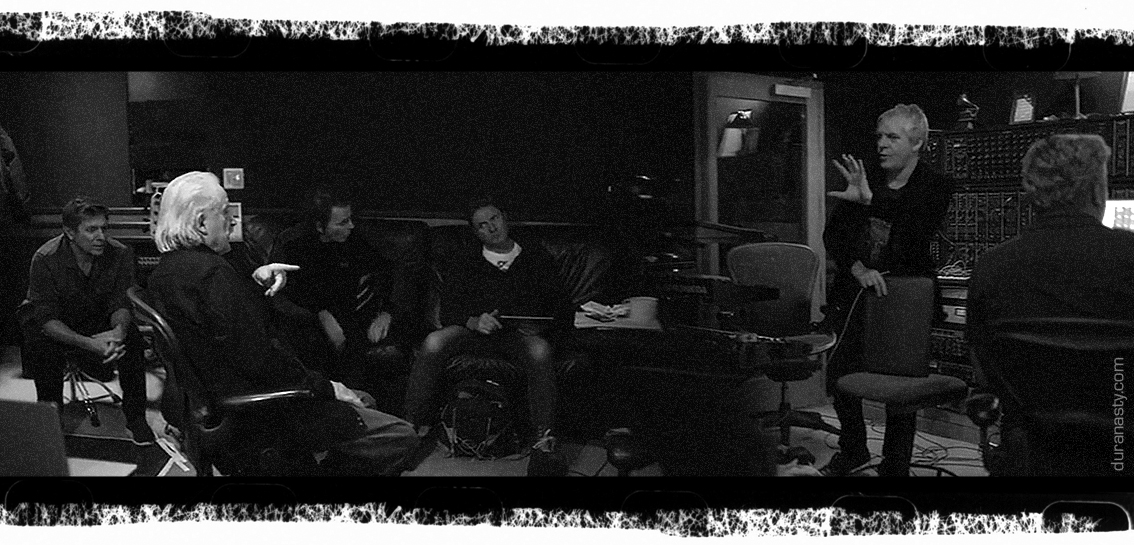

“The sound of early Duran was this union of live drums with sequencers, synths and beautiful melodies”, says Nick, “we just added more guitar right at the point where we were forming the band, so Giorgio was always a big hero of ours and being in the studio with him was so special.”
Six years ago, Duran Duran presented an award to Moroder at the GQ Men of the Year Awards in London. “Moroder was on our wish list since Duran Duran's early days!” says Nick, “We always considered him a superhero.”
“My partner, through Italian friends, got in touch with Giorgio in Los Angeles. It was a surprise for my birthday, she took me out on a dinner with him. It was a wonderful meeting and I remember the first thing we said was: “why we never worked together? It's somehow inevitable!”
“About a year later, we finally managed to make the stars align and got into the studio. He is just a consummate professional and everything you would ever want Giorgio Mordoer to be, he is. When we started working on the songs our reaction was like: Wow, it's like we knew Giorgio since forever!”
“Giorgio is one of Duran Duran’s absolute superheroes and we’d been wanting to work with him since we first formed the band.” Rhodes recalls “When I was a teenager DJ’ing at the Rum Runner Club in Birmingham, I used to play a load of Giorgio tracks. I don’t know how we never managed to work with him over the past four decades, so to finally converge was great.”
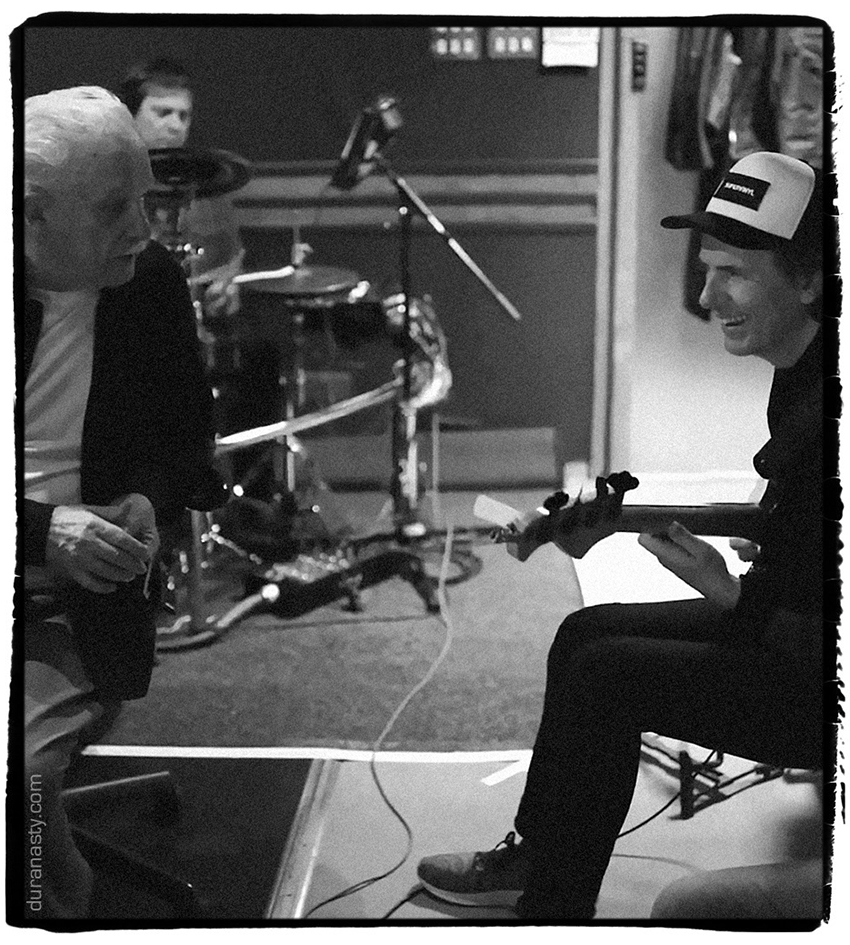
“It's kinda like dating a girlfriend from high school,
someone you had a crush on for years”
John Taylor
“Giorgio Moroder was was a great influence on us,” says John. “Looking back, we were just punks from Birmingham who wanted to play and, due to different circumstances, we ended up having two influences: the disco music from New York and the European techno. Since the beginning, Nick and I have chased that Moroder sound to make it central to the Duran Duran's sound. During the Future Past sessions we talked to Giorgio about that and he got really excited.”
“Working with Moroder was the ultimate experience for Nick,” continues John, “There was a completely different, simpler approach to the two songs that Coxon didn't play on. Usually when we write a song we try to reinvent the sound of the band at the same time, it's something we just do. When we write a song, it has a lot to do with sound architecture, we spend a lot of time on how this should be. This is just as important to us as the sheet music or the lyrics.
The Moroder songs were less about that. Everyone knew what they wanted. We wanted Duran Duran meets Giorgio Moroder. Then he came into the studio and said, "I want to try something new with you guys. Something I've never tried before." But then we had to tell him that we knew what we wanted, we wanted his typical studio approach.”
“Giorgio wasn't involved in the lyrics,” says John, “The lyrics of the Giorgio songs are kept simpler than the others on the album like "Invisible", "Wing" or "Hammerhead" that have a depth, not just hooks.”
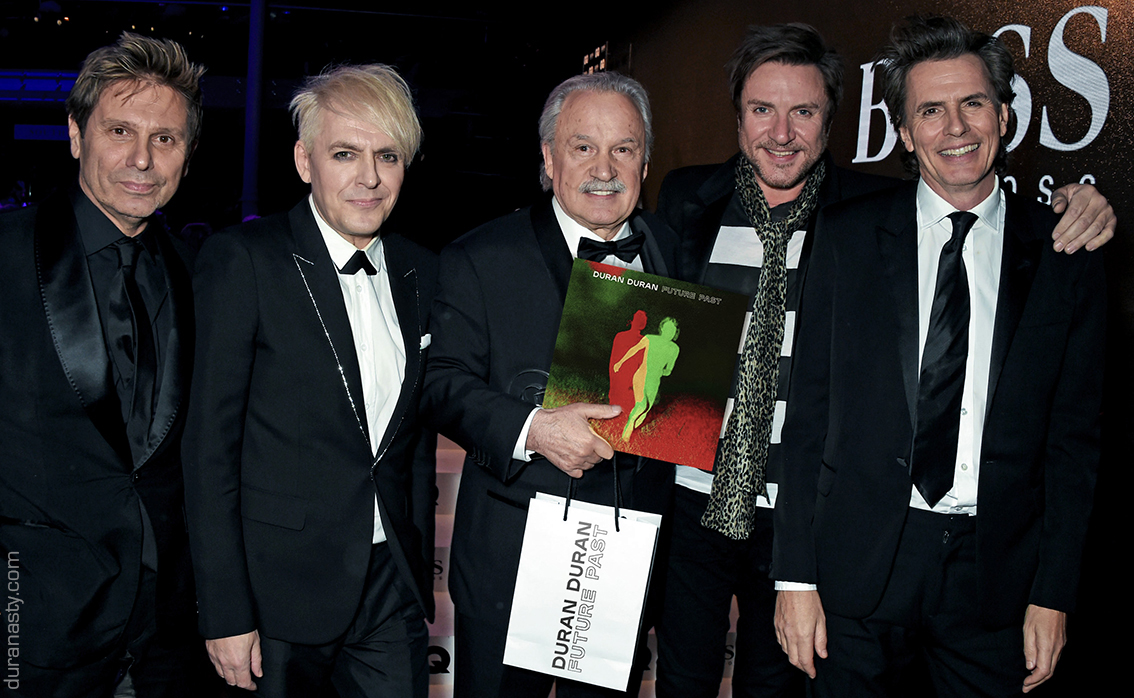
“He is so much part of the band's DNA, the first song we ever played together live was I Feel Love,” recalls Roger. “it says a lot of how we wanted to sound like him that we would play that song before any of our own material.”
“Giorgio is the Maestro,” says Nick. “I will always be a fan, so it was an honour to work with him. It’s strange that we’d never worked together before as we are such a perfect fit. We could’ve worked with him at any time in our career, really. He would’ve been great on our very first album.”
The band worked with the legendary producer on two tracks, ‘Tonight United’ and ‘Beautiful Lies’. “Giorgio was everything we love in songs: sounds, melodies, arrangements and compacting things,” explains Rhodes. “Those two tracks are very Euro‑dance, with high‑energy pulsing synthesizers and sequencers, synth hooks and super‑hooky chorus lines and melodies.
He just understands Dance music and how to work on something, notes Nick, we just wanted to make the perfect match between Giorgio Moroder and Duran Duran. I think we managed to achieve the Moroder-Duran mix we wanted and it was really exciting.”
John says: “for most of the record, we struggled to reinvent our sound. But that didn't happen with the Giorgio's songs, because we knew exactly what we wanted from those sessions with him. We didn’t want to force anything but just concretize a Duran Duran meets Giorgio moment. He plugged in his keyboards, ran his sequences, and everything flowed. It was a beautiful and inspiring experience.”
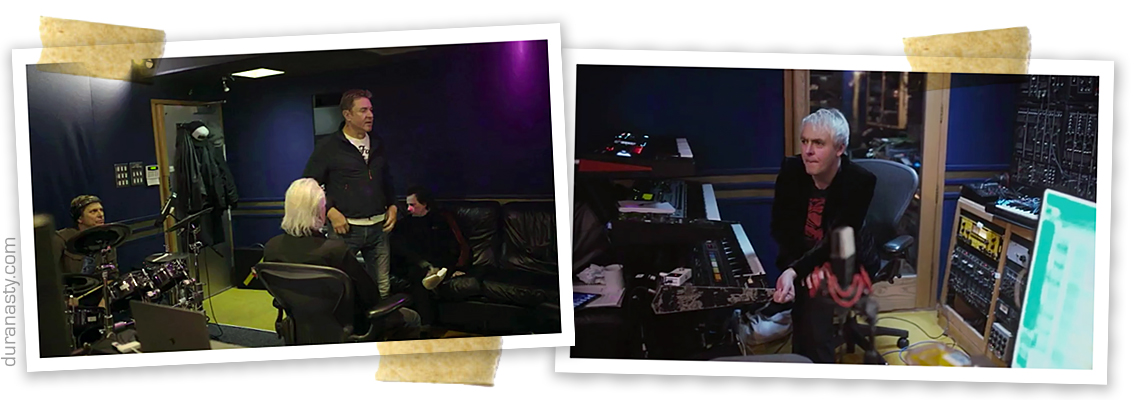


“Giorgio is as sharp as a razor, 79 going on 45”
Nick Rhodes
“We’ve had this vision in our heads of what it would sound like — the perfect blend of the Giorgio Moroder and Duran Duran sound — and for once it went predictably well.” says Nick. “Everything we did just fell into place and sounded just as we envisaged it. He was the consummate professional, too. He’d turn up every day on time with his briefcase, get out his little keyboard and put it on the desk along with his computer and get to work.”
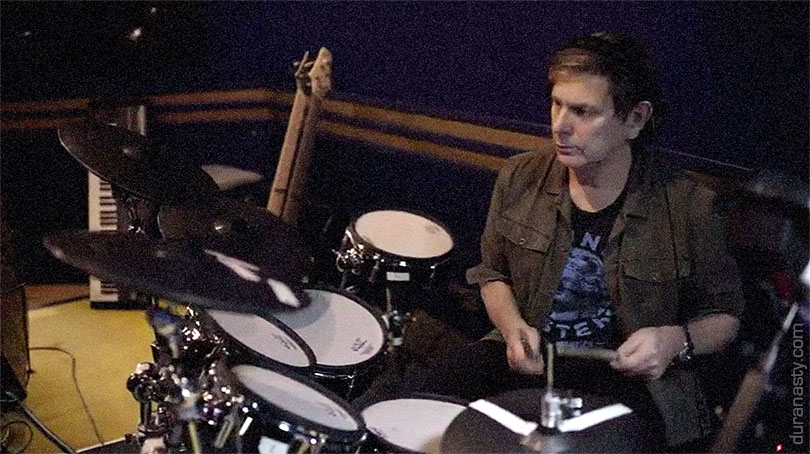
“He comes in the studio like a doctor, with his suitcase
and his little keyboard inside”
Roger Taylor
“He is such an utterly charming, fascinating, talented human being” continues Nick, “It's great to come across someone who's had an absolutely remarkable career, yet he is as sharp as a whip. When we were in the studio with him, we all felt that he was completely focused and in control of where he wanted to drive the Duran Duran machine. It was just pure joy.”


![DD-Moroder unfinished track! During an interview [by Rolling Stone Italia] with Le Bon, Rhodes and Giorgio Moroder, Nick mentioned a third track from the Duran-Moroder session. Nick to Giorgio: “We have the third track to finish, the one that didn't end up on the album” “There was also a third song done with Giorgio in those four days of session,” Nick explains to the journalist, “but there was no time to finish it. Simon and I listened to it again a few days ago and we just said "No, this thing can't be lost, we have to go back to it and finish it." Nick: “Would you like to do that, Giorgio?” Giorgio: “Yes, but we have to build a melody to it...”](images/u3111-16.png?crc=4205833237)

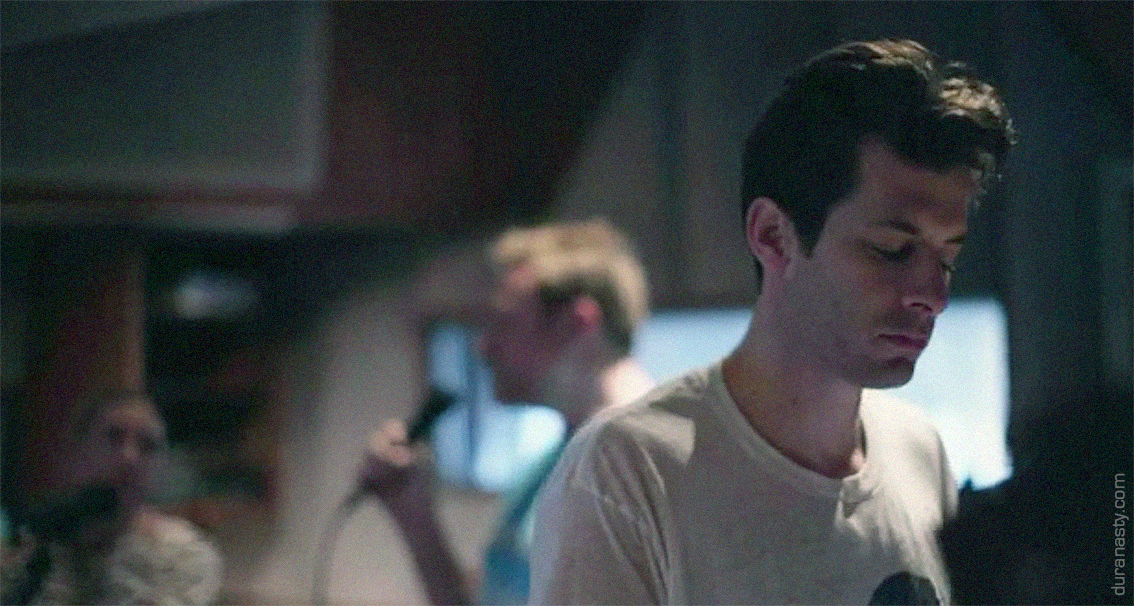
![Duran Duran are on the same wavelength with producer Mark Ronson, so having him on Future Past was only natural. John says, “I'd like to think that Mark will always be part of our kind of creative work in some way, you know, and maybe he's going to write something with us or play guitar or produce things, but he's so easy to work with.” Having worked with Mark Ronson since 2010's All You Need is Now, the producer only co-write the epic ballad Wing on Future Past. Simon explains: "Mark is almost a comfort zone for us now. It was great to be with Mark in Hollywood, but he felt he didn't do enough on Wing to warrant a production credit — the song wasn't very developed when we left the studio. The track itself is about admitting some home truths. A song about jealousy is never easy to write, getting that feeling across of what it's like to be chewing yourself up. It's not necessarily referring to an experience I've had recently.” Likke Li didn't make the album Mark is someone that we have been fortunate to know in the last ten years. We help each other, we asked to do a couple of songs together and he produced our [yet unreleased ed.] duet with Lykke Li. The song didn't make the album because [according to one of our sources] the lyrics had to be adjusted so the song didn't get finished. Just recently a new duranduran.com's AskKaty says the band is going to finish the track next month. Simon refers to Lykke Li as “absolutely magical. She's like a Scandinavian wood nymph. She's very sensitive. I wanted to get some of that female energy into the song, into the lyric, and it turned out to be a lyric I would have never written by myself. It was nice to let her take the lead with that one, she's an incredible singer, she's got something very unique about the way she sings; I learned quite a lot about intonation from listening to her.” [below pics of the guys in the studio in Los Angeles, in the last pic you Likke Li with Simon singing together]](images/u2008-24.png?crc=444239425)
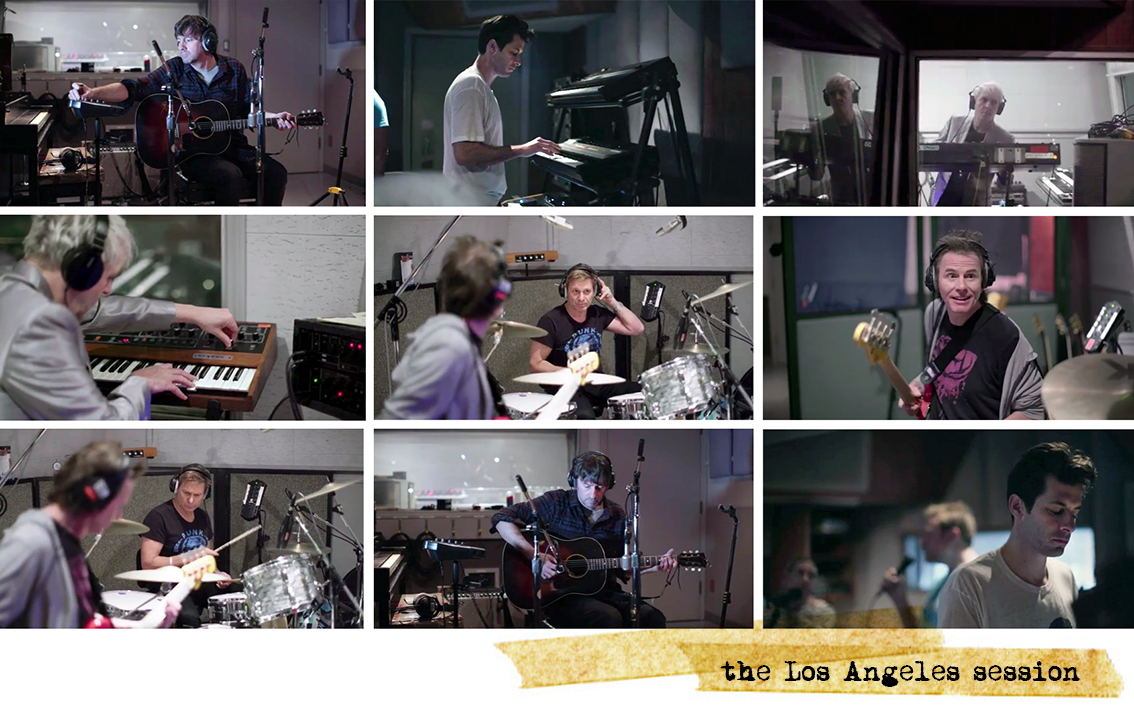


Duran Duran have always been a reflection of their influences, while creating music that is future-minded. The new record has all the band's hallmarks: sleek electronic-dance pop on "All of You," "Tonight United," and "More Joy!"; sophisticated art rock on "Beautiful Lies," "Nothing Less," "Falling" and reflective numbers such as the title track; and even some hard-hitting hypnotic funk rock, "Invisible," the album's first single.
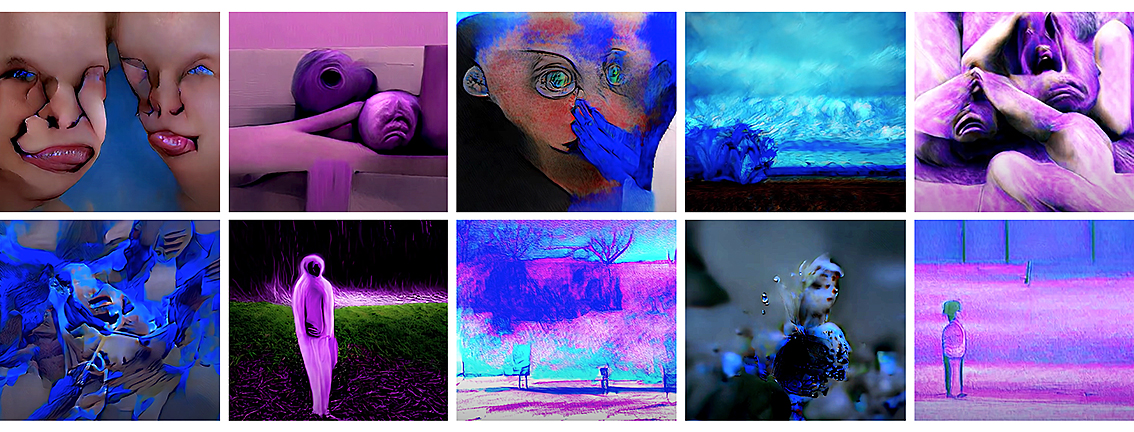
We’ve got other ambitious projects in the works, too, but I don’t really want to talk about them before they’re even embryonic. It’s kind of asking for failure. I don’t want to jinx it”
Simon Le Bon
Cutting-edge technology is apparent in the video for the album’s lead single, ‘Invisible’, the first to make use of an artificial intelligence called Huxley. “Huxley, our AI, is the most extraordinary machine,” says Rhodes. “I think people are sometimes a little frightened of AI and what it’s going to do, and understandably so. As many of the great thinkers of the world have said, we must never let AIs become weaponised, because the leap in technology over the last decade has been phenomenal. With Huxley, what was interesting in making the video for ‘Invisible’ is that we fed in the song, photos of us, videos of us and, very specifically, videos of us mouthing the words to the song. Also, lyrics and references of what the song was about, along with some art references too, they all went in as well. After a while it learns like it is a child. Then the AI mapped all the measurements of our faces and took a load of photos and images and made its version of what it wanted it to look like. The blacked-out faces was a shock! We didn’t tell it to black out our eyes, that’s just how it came back. I guess putting multiple layers of different images must have darkened the eyes.
“There were some strange things that happened along the way. At one point it became completely obsessed with dogs, and we didn’t know why. For about three days all it was doing was making dogs and we thought ‘This is going to go wrong!’ as there was no way to control it. So they then had to invent a director who we called Hitchcock to go in and give it a rule and try to persuade it by asking, ‘Can you make different types of animals?’ Then it started making all these different types of animals and strange creatures. It was a very fascinating experience working with another type of being, because it was much more than a computer. It was programmed to follow the same processes as the human brain. It’s based on the part of the brain that creates and dreams, rather than just the cognitive part that is logic and fact. The people that worked on it are all students of a prominent neuroscientist, Karl Friston.”
The video for "Invisible" is part of a one-of-a-kind collaboration between artists on different planes of existence, says John.
"As we come out of the pandemic, we all feel a little hangover; we scratch our heads and wonder what’s going on. I think that [visual] ambiguity in the video is good because people don't get it immediately, and that’s the good thing about abstract art, It's easy to project your feelings in the video and I think that at this moment it is even more interesting because people have different feelings about the current situation.”
“Huxley has been designed to be as close to the imagination of the human mind as possible,” says Simon to Vuture. “That’s what they’ve tried to achieve. What it’s done for us is incredible. We’ve got other ambitious projects in the works, too, but I don’t really want to talk about them before they’re even embryonic. It’s kind of asking for failure. I don’t want to jinx it”

“We probably wouldn't have picked Invisible as this record's first single. But when it was suggested to us, we looked at Invisible again and went, 'They've got a point!' The song acknowledges where we are in life, which is important. The first release from any album has to say, 'Here we are, we're back! And this is what we're like now!'”
Invisible is the first single from Future Past. “It’s just so different from anything you've heard from us before, or actually anyone else,” says Rhodes.
“Sonic architecture has always been incredibly important to Duran Duran. I think, with Invisible, we really have managed to carve the sculpture the way we wanted it. Sonically, it’s a very unusual piece of music. I think when you merge all the instruments together, it creates an overall sound that perhaps you haven’t heard before.”
“It kind of started with the beat,” adds Simon. “It’s got a very, very assertive drum track, it’s really all about the rhythm. I just had to fit in a melody around that, really. John and Roger’s rhythm track is mountainous; Nick’s melodies twist and soar; Graham’s guitar is a knife.”
“When we could return to the studio, we listened to Invisible and it really surprised us. It was like, 'God, this is a true reflection of this moment'”
John Taylor
It began as a story about a one-sided relationship but grew into something much bigger, says Simon. “A personal thing about a relationship where one person is not listening, and the other person starts to think: maybe I’m just not here”. Soon it grew into something broader, “about being human, and realising there’s a lot of us and we don’t all get heard”.
Simon calls it “a kind of protest song.” “It started off as a relationship song. But in the light of the modern world and everything that’s been going on and the idea of a populace whose need to be heard and recognised is growing, this song took on a different meaning. It’s taken on a really great significance for the band. It would have to be significant because it’s the first release of the new project.”
Le Bon highlines one lyric from it, “And the voiceless crowd ain’t backing down.” In the light of Covid-19 and “everything that’s been going on in the last year and a half really, with all the different public movements [the protests we've seen around the world in the last year, such as Extinction Rebellion and Black Lives Matters] and all the noise people have been making, it suddenly sounded relevant in a much bigger way.”
It is over a year since it was recorded, but John Taylor notes that in that time, as the world has weathered isolation, upheaval and political protest, the song has acquired new layers of meaning. “It’s become enormously resonant,” he says. “And I’m glad that we didn’t come back with a party song. That would feel tone deaf.”
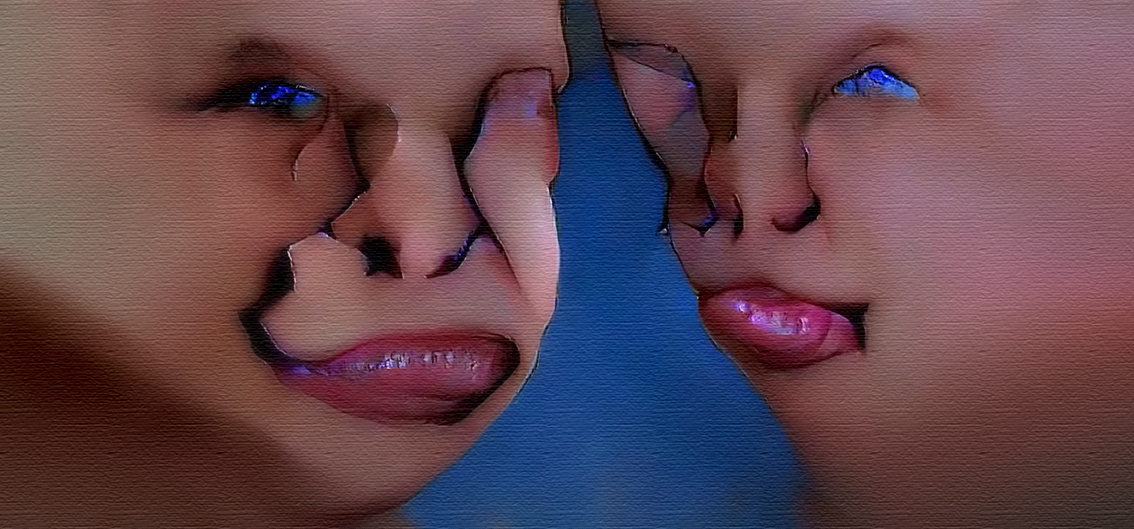
“I feel that Invisible is a song with a lot of futuristic projection,
the idea was to make Duran Duran sound like the future”
John Taylor
“It just seemed to be the right opening track, particularly because of the lyrics — Simon just managed to capture something,“ says Rhodes. “I think we've all felt a little bit invisible at times over the last year.”
“Invisible gained a different meaning after the lockdown,” says Roger, “Which could be also related to that feeling of being trapped in the pandemic, becoming invisible, not being heard or seen. A lot of people can identify with this song”.

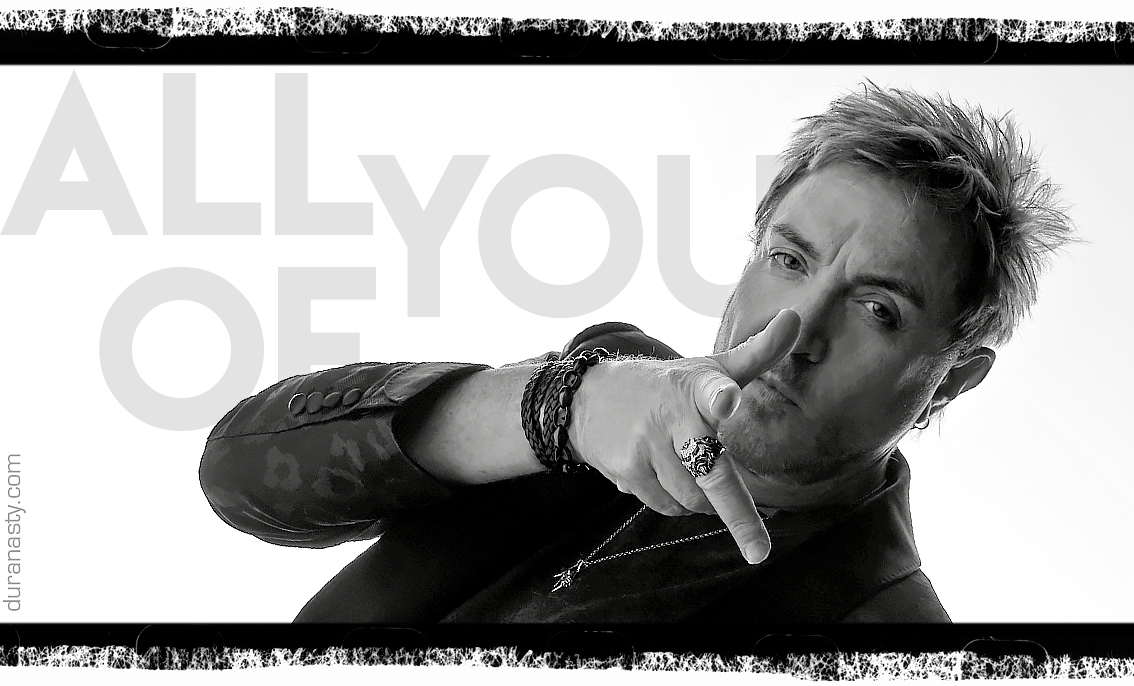
All Of You is a synth-pop funk party with John's great funky solo bass and great drums with a rather hypnotic and looping keyboard phrase and catchy disco chorus “I want everything, all of what you do / Every night, every day, I want all of you... In that we are music lovers / This much we’ve learned / Two souls among many others / Like the sun, we’ll burn”
This is one of Roger's favourite tracks because he thinks it has great energy and it's going to be great to play it live.


“There are a lot of fantastic divas out there but
Tove Lo was that bit edgier and darker”
Nick Rhodes
A reflective Simon Le Bon sings lines like “Standing on the edge of something greater than us all / Down into the heart of universes we fall / Falling with the fires trailing glory on their way / Know that we are heading for tomorrow today / Anyway, lover / What ya think I'm gonna do? / When it's / all over / I give it all up for you / Giving up believing /Giving up completely / For you”.
Tove Lo takes over lead vocals for the second section of the song and there’s some great EDM-style synth
This is interesting fusion of eras, mixing loops, beats and orchestral synths. The Swedish singer’s vocals are a great addition to Simon’s on this the upbeat track. “Giving up on leaving/ Giving up completely/ For you,” both sing in harmony. The orchestral bridge brings the track to a crescendo, leading into the final chorus.
About the song, Simon says: “Give it all up is my favourite song on the album, it was the biggest challenge for me to give up so much wonderful melodies to somebody else who's a great singer, Tove Lo. I was so possessive about that, having given it up, I made sure I wrote a little extra verse for me to sing that melody, having done that I've challenged my self and I've accepted it and when I listen to it I just think is amazing.”
"Tove Lo, we all like her voice, she's a bit edgier, she's kinda of a bit different than the other people in that zone", says Nick. “We wanted someone who was cool and a little edgy for the song “Give It All up” so we sent her the track and we were really blown away with what she sent back. Her addition brought an energy to the song that wasn’t there before, I absolutely love what she added to the song. Unfortunately, the pandemic kept us from meeting up with her personally, it would have been great to work with her in the studio.”
Nick continues, “We weren't quite sure what we were going to get back because that was made remotely, Ivorian Doll we were actually able to work in London, but Tove Lo got the track, she fell in love with it, and said "can I try and so something on this?" and we said "OK, yes sure, great!", not knowing at all what we would get and when it came back it was one of those fabulous surprises.”
“It’s that kind of emotional song that keeps building in desperation and energy so you wanna dance and cry to it”
Tove Lo
In a statement Tove Love says: “It was such an honor for me to join these legends on this amazing album and tune. Getting to sing along to Simon’s voice was pretty surreal. I’m also a big fan of Erol Alkan so I was very excited when I heard he was producing the track! It’s that kind of emotional song that keeps building in desperation and energy so you wanna dance and cry to it. My favorite kind!”

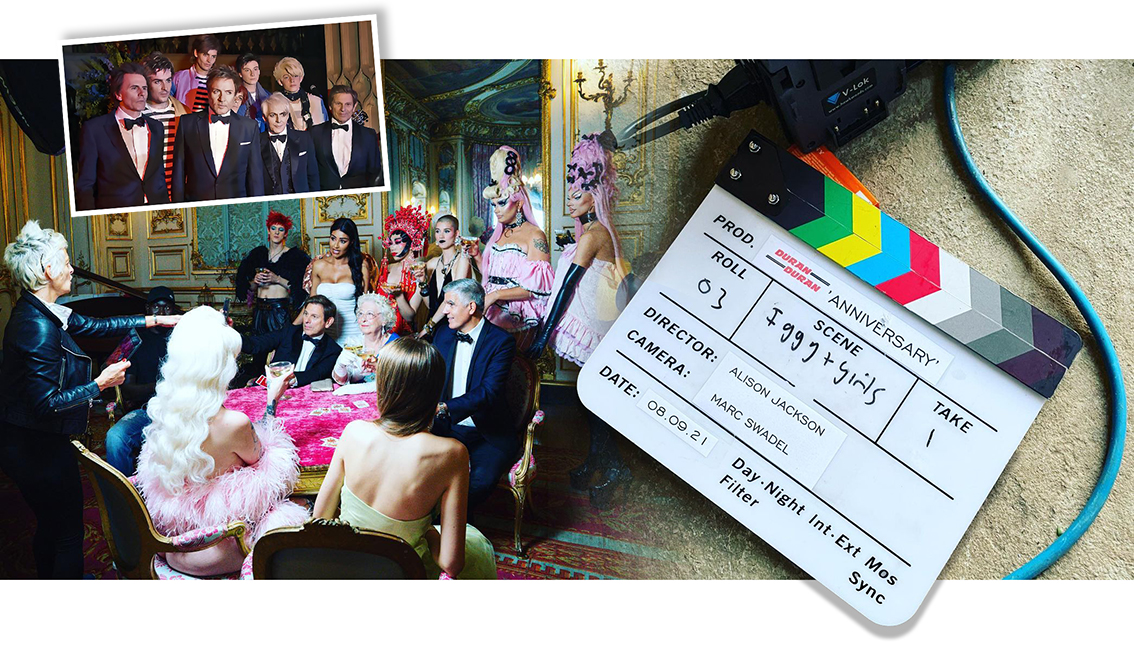
The “Anniversary” video was directed by Alison Jackson, an award-winning filmmaker, photographer and artist who explores the cult of celebrity while using celeb lookalikes.


“We wanted to write a song about celebration, which we have never really done. It's turned out well. It's got lots of themes and sounds from previous things we've written, and it's got a great energy”
Nick Rhodes
“The word anniversary kept buzzing in our heads”, recounts Nick, “and so we said to ourselves: let's use this song to celebrate. The reason human nature needs to celebrate is the willingness to be together and try to make something special happen, to remind you of the things you may miss later on. We had never done anything truly self-referential before, but as we are all happy and grateful that we were able to stay together for so long and still do things we like… well the song says this for us. And everyone can use it to celebrate something special. For anyone who has a birthday, or an anniversary with a partner, or a dog 's birthday or a cat's birthday, those things mean something.”
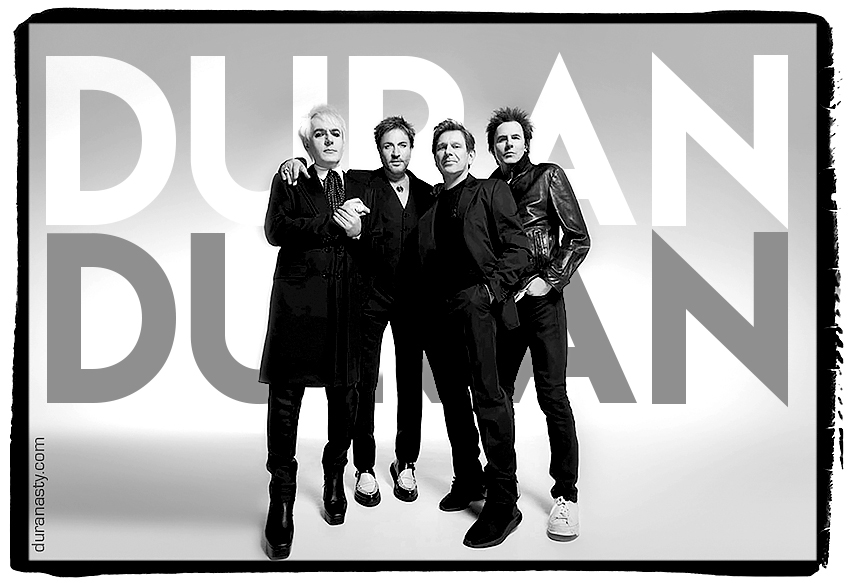
“I think Erol Alkan was a huge fan and knew things about the B-sides of 12″ versions we released that even I had forgotten. And I think through that knowledge, he found what he loved about Duran Duran. He was like, “Can you guys try that here?”, and we were all like, “Yeah, of course!” says Nick.
“So yes, it was intentional from Erol's side and I think, this time, more than others, we ended up with some tracks that evoke our older material.”
“I think it's in our nature to form relationships and give recognition to those relationships, whether it's family, a love story, a business relationship…” says Simon, “you know, sometimes you look your life and you think, wow, I've been doing this for a long time, and it's really worth it. And I just want to say thank you. This is what the song is about.”
“After playing and working together for so long, we very much appreciate what ‘being together’ and ’staying together’ can really mean”
John Taylor
John Taylor said in a statement: “Obviously we were conscious of our own impending 40th anniversary of making music together, but we wanted the song’s meaning to be inclusive in the broadest possible way. After playing and working together for so long, we very much appreciate what ‘being together’ and ’staying together’ can really mean, it’s not something we would have thought song-worthy 40 years ago but we do today!”
“I think it's about our growth as human beings” continues John. “When I think back to myself as an angry teenager ... my father and my mother have been together for a lifetime and have always celebrated their wedding anniversary. Every year they wrote letters with the same things written on them. And I remember thinking: what's this crap? Why do you even have to celebrate it? It seemed trivial back then, but today I know how difficult and valuable relationships are, especially long-term ones. We would never have written a song like Anniversary when we first met, that wasn't what we were doing. We were all focused on the moment, but today, being here talking about our new album… we worked hard, we believed in it, so yes, today we celebrate us.”

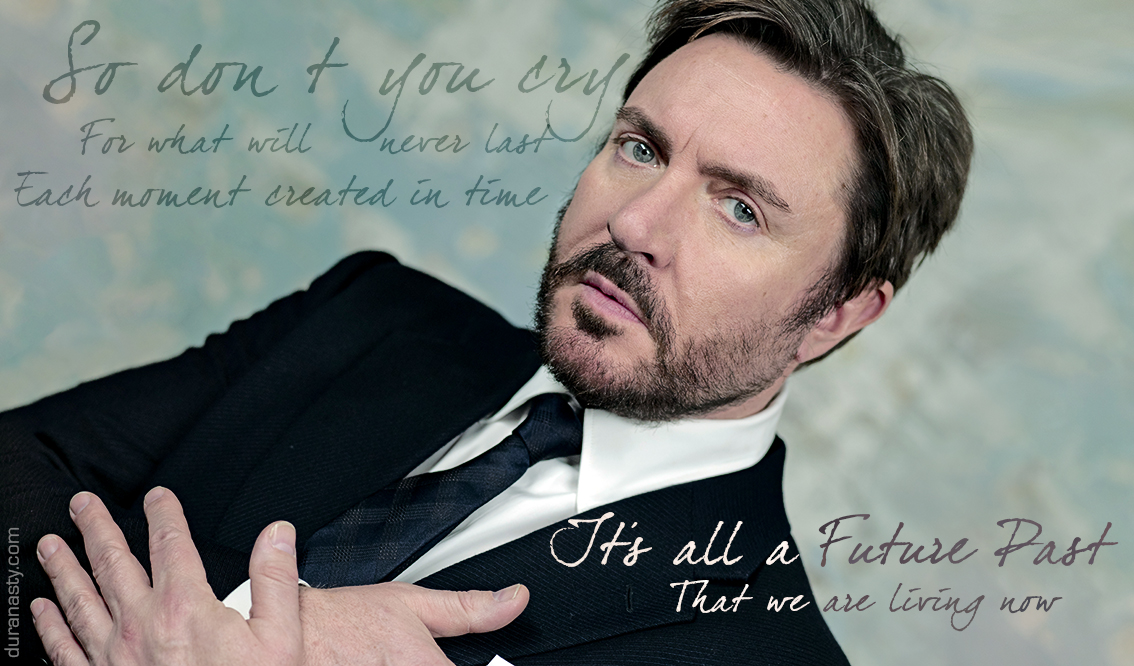
“There are some amazing, very introspective, deep lyrics on this record, Future Past is one of these”
Roger Taylor
The title track of the album is a strong ballad. A wonderful lyrical conceit, which is the idea that what we do today is a ‘future past’, so you can never lose ‘the moment’.
Simon says: “Someone said we are creating a future past and we liked that, as it says so much about life. It’s easy to just miss it if you don’t nail it down from time to time. Nostalgia is a double-edged sword and makes you sad that you will never do certain things again. So you need to look back and enjoy but you’ve got to live now.”
“So don’t you cry, for what will never last / Each moment created in time, it’s all a future past / that we are living now”, Simon sings. A reflection on the human condition, ‘Future Past’ is a song that connects on an emotional level.
It's an introspective mid-tempo synth power ballad. “Don’t you cry for what will never last/ Each moment created in time/ It’s all a future past that we are living now,” Le Bon sings on the dramatic chorus.


Beautiful Lies is one of the two amazing songs co-produced with Giorgio Moroder. It's one of the more instantly recognizable and memorable from a lyrical perspective and from a sound point of view too.
“Beautiful Lies is the perfect example of how a collaboration with us should be. A perfectly successful synergy”
Simon Le Bon
The synths of “Beautiful Lies” create a great dance-floor atmosphere, thanks to the disco legend’s signature pulsating keyboard sound; John’s excellent bass work is a highlight. The programming on this track mixes old and new songwriting, a real fusion of sounds in such a great up-tempo song.
Nick says: “This is one of my favourite songs on the album, Moroder here proves "The Maestro" that he is, he is in total control and focuses on every single detail of the track, giving us detailed and almost "surgical" advices...”


This is the second track that sees the guys teaming up with disco legend Giorgio Moroder: “Giorgio Moroder, Duran Duran… this is music for a world that’s coming back together,” said Simon in a statement.”
Like some of the other material from Future Past, the uplifting “Tonight United” leans more toward a modern pop sound. It has hints of the old-school Duran Duran sound while incorporating more contemporary pop elements, the guys are at their best here when they don't try to escape their legacy and "Tonight United" adopts the new wave bounce of "Planet Earth" for yet another new decade.
“We wrote this song before the pandemic. It's like a premonition that something was going to happen and that we would be together again”
Roger Taylor
Roger Taylor explains that Tonight United was written a week before the pandemic and was somehow premonitory.
“It's about people getting together again, being together, enjoying each other again. We wrote this song before the pandemic. It's like a premonition that something was going to happen and that we would be together again. We made this song with Giorgio Moroder and exactly a week later the pandemic broke out and the album was paused. When people tell me: ‘This song is great because it talks about everyone being together again after the pandemic, right? And I say, 'No, it was accidental'. I love when these 'accidents' happen.”

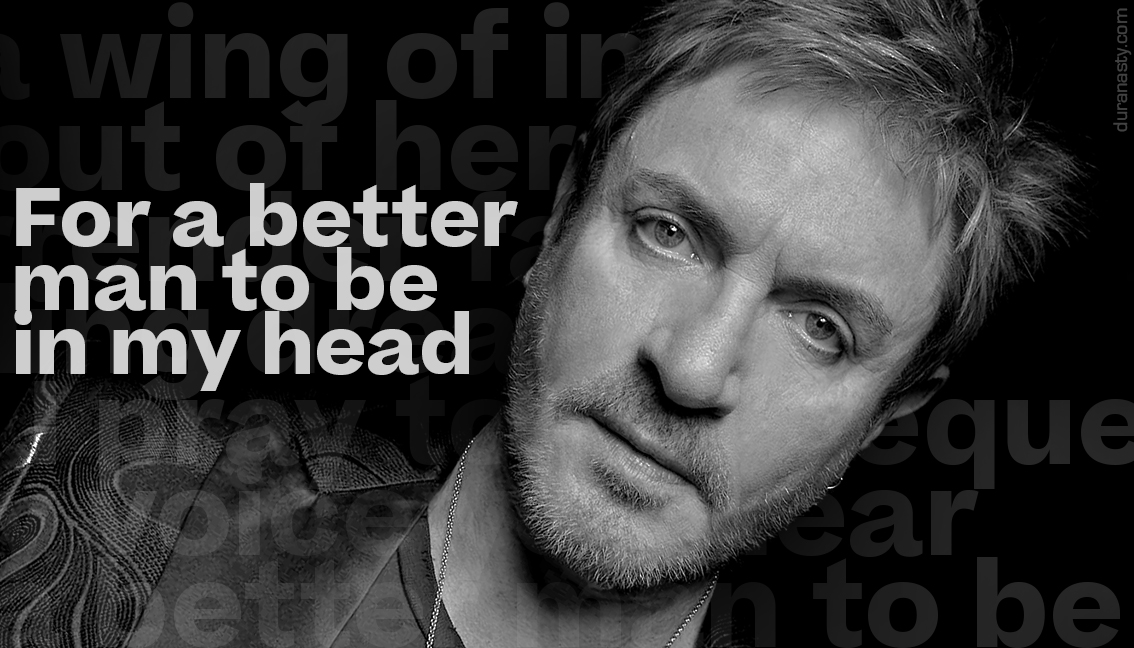
The mid-tempo ballad Wing is the only track on the album featuring Mark Ronson. It's the longest track on the album [5.19] which features some great electric guitar thanks to Coxon and Ronson and a great job with layers of keyboards. The track rises and falls, creating a dynamic musical framework with Simon delivering another great melodic chorus on this very memorable ballad.
“The track itself is about admitting some home truths.
A song about jealousy is never easy to write, getting that feeling
across of what it's like to be chewing yourself up.
It's not necessarily referring to an experience I've had recently”
Simon Le Bon
“Wing, it's pure melodrama,” says Simon, “its about self loathing with a huge dollop of optimism, kind of 'maybe I can get out of this', I think the line 'For a better man to be in my head', that's the most melodramatic line I ever written... and that's me!”

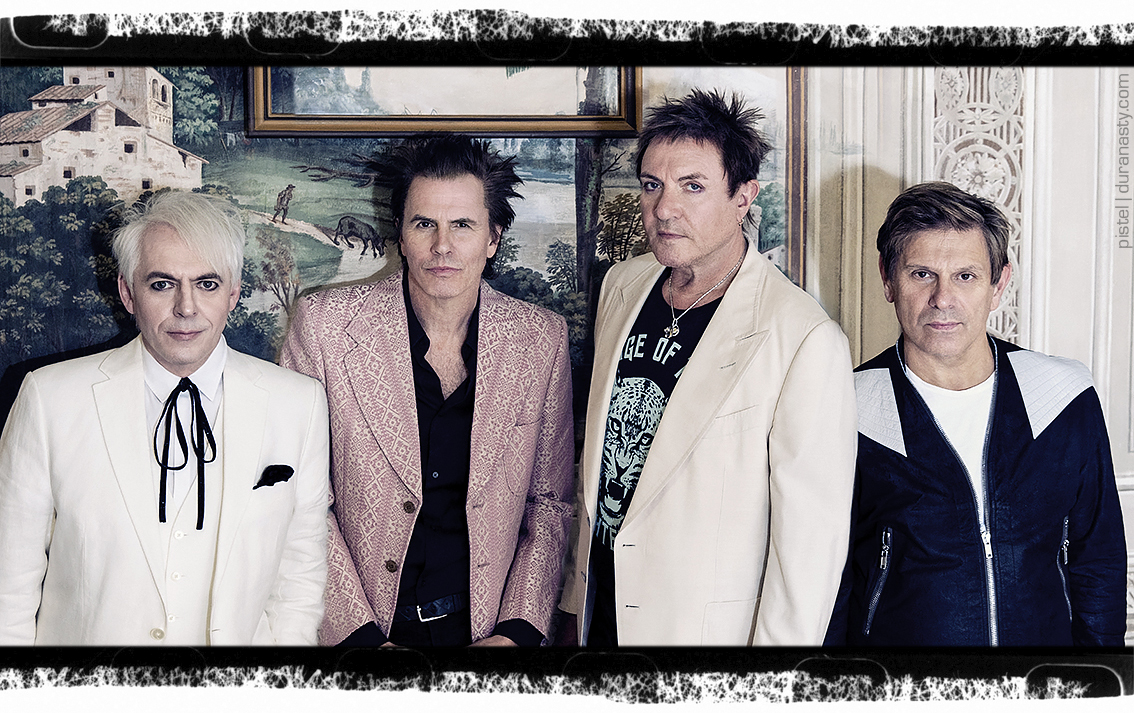
“Nothing Less” is another dramatic atmospheric mid-tempo track, it starts with ethereal synths and a beating heart pulse, goes on with some great synths, syncopated rhythms and some great Coxon guitars; it features a superb and addictive chorus: I want to thank you for all the loving, baby / (What am I, what am I gonna do?) / 'Cause nothing gained ain't lost at all, oh / (What am I gonna do?) / And when it comes to indecision / (What am I, what am I gonna do?) / Tomorrow maybe there'll be nothing less and nothing more.
“Relationships need input and commitment. But when you're
at the top of the curve, before going into a downswing,
there's a moment of equilibrium that's really nice.
Nothing Less is a thank you for all the nothings”
Simon Le Bon
The track, according to Simon, features another very personal lyric. Simon and Yasmin Le Bon have been married for 35 years, and Nothing Less is a beautiful celebration of a long-term relationship. “There are times in a relationship where there is ambivalence,” Simon explains. ”And that's OK. Sometimes you don't have to work at it, you can just live in it. You can't do that forever, because relationships need input and commitment. But when you're at the top of the curve, before going into a downswing, there's a moment of equilibrium that's really nice. It's saying, Well, we're here' and 'I want to thank you for all the nothings' — the things that didn't happen as well as the things that did. Nothing Less is quite tender, in that way.”

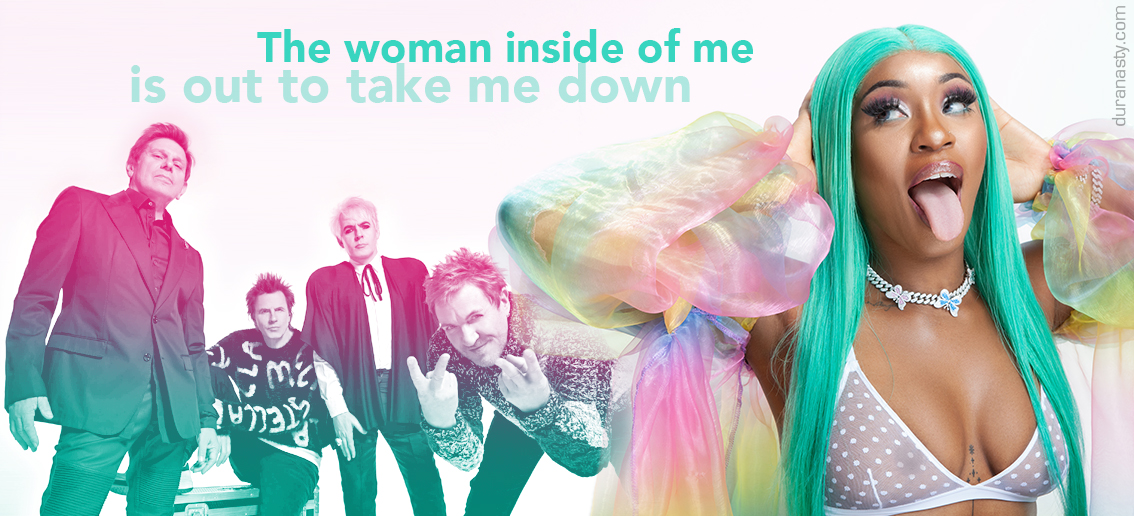
“It's the most contentious track on Future Past. Roger reveals “another 10-song record” could be released from the tunes which didn't make Future Past's final 12 tracks, but he and John were particularly keen that Hammerhead be included. Nick wasn't convinced of its merits, and John admits: “Hammerhead is such a killer bass track, when it looked like it wasn't going to make it, I thought 'Aw, fuck!' When I played my bass part on Hammerhead, Erol was pushing and pushing me in the studio.”
“I always try to embrace the new” says Nick, “I see it more like an interesting collision of new ideas from different generations and that can sometimes produce remarkable results. This time, when Simon said he wanted a female London rapper on the track “Hammerhead”, I felt that the idea sounded so “wrong” that it must be a great idea, so I said “Let’s do it!”. We sent the track to an artist called Ivorian Doll and her addition was really special and lifted the track. You never know until you try!
“I got into London rap, and that’s the reason Ivorian Doll is on “Hammerhead,” to have that really street-y sounding voice.”
Simon Le Bon
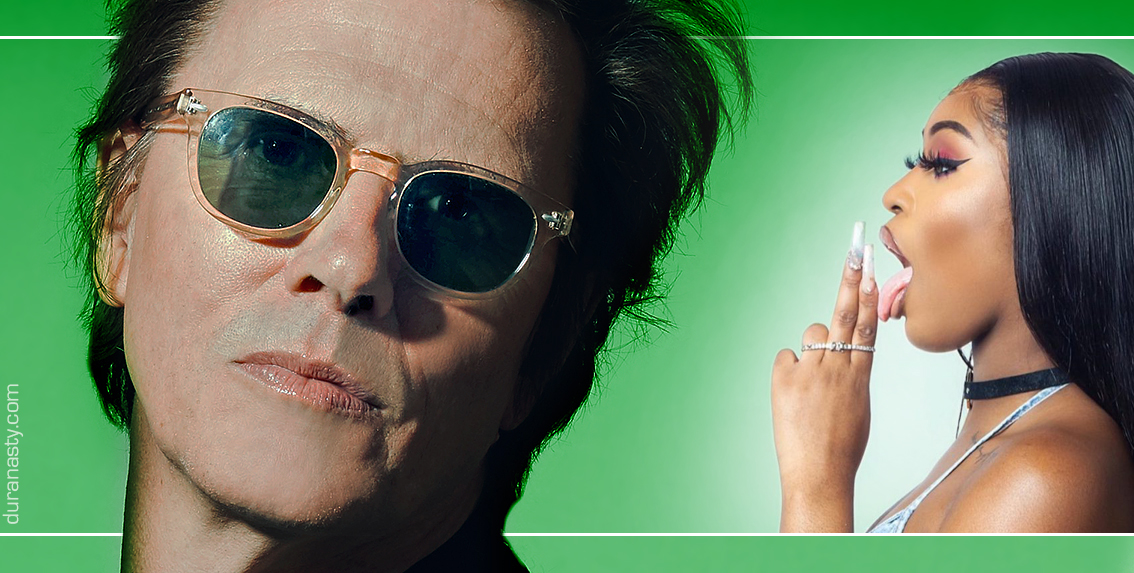
“Having her in the room with us was like having that level of naivety
that I had when I’d just started and it was kind of inspiring”
John Taylor
“We reached out to her - we were introduced to her by Rob Hallett – our agent of many, many years. She was one of a couple of artists that we thought could be interesting to do something on the song “Hammerhead”. And she was up for it”says John. “She came with a producer and a lyricist, and honestly, I didn’t think she really knew who we were. It’s like, in my untrustworthy memory, I imagine her saying, “My mom said I had to do this.” And by the end, she was like, “Oh, so this is what a rock band is like.”
She didn’t really know what she was coming into, she was just up for it and we had the best time with her! Her spirit was just so amazing and we kind of painted this picture, ‘cause Hammerhead’s about a woman as a Marvel-comic goddess – like this kind of revengeful angel – and she really, really got into it.”
“It was an entirely different experience” continues John, “but also having her in the room with us and having that level of naivety that I had back once when I’d just started. Having that kind of innocence, it’s really charming, and it is kind of inspiring in a way.”
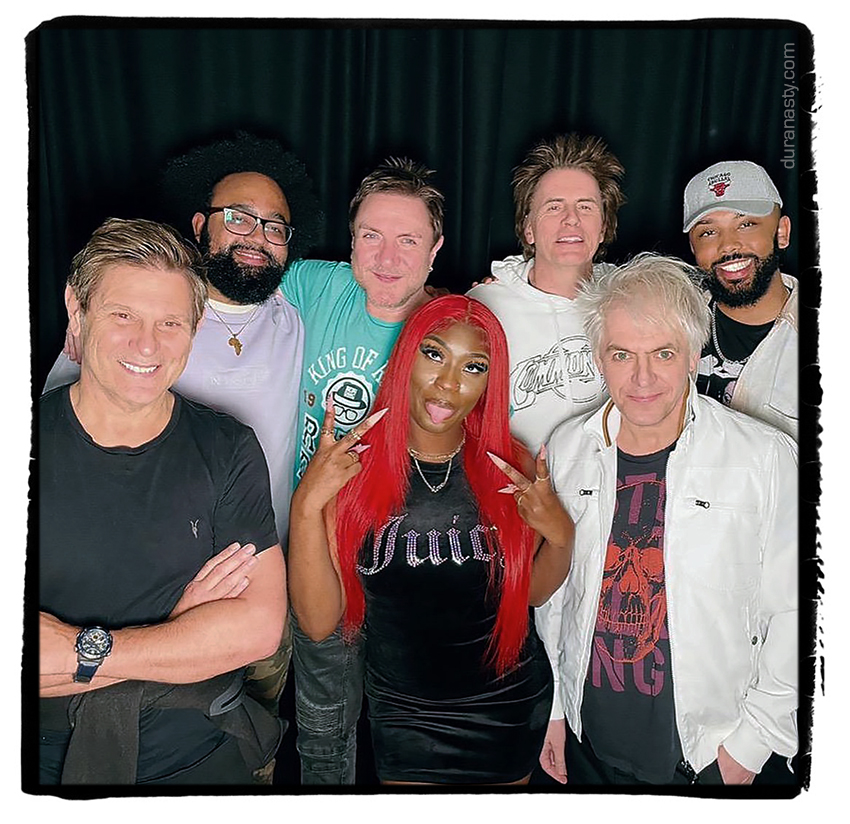

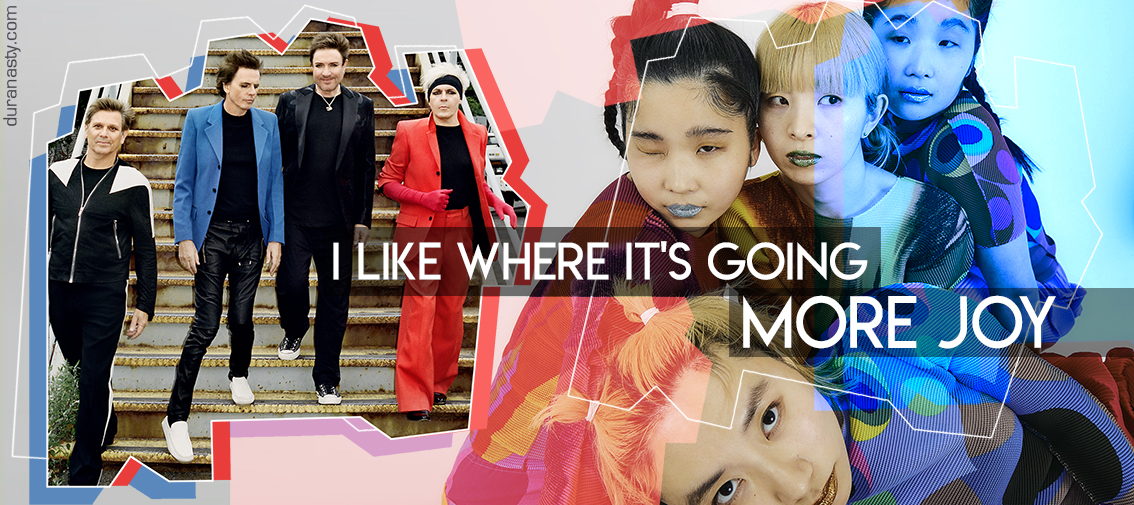
The track doesn’t sound like anything else on the album. The fun, upbeat and no-nonsese “More Joy!” sees adding a flavor of J-pop-disco-punk to the Duran formula with collaborators Chai, the all-girl punk band from Nagoya, Japan.
'More Joy!' is one of those Duran songs that reveals Duran's signature pop energy [check out songs like 'Nice' and 'Too Bad You're So Beautiful'].
It’s an energetic track, with fast-paced synths, driving percussion and Chai’s chorus “More Joy!”, the song delivers so much fun! Heavy on bass and with different synths sounds that almost sound like an 8-bit video game.
On bringing Chai on board, Simon recalls, “Nick suggested some girlish voices on ‘More Joy!’ and I knew exactly where to find them – Chai, post-modern, all-girl Japanese punk band, whose energy and pure sense of fun might actually blow your ears off! We are honoured to have them sprinkle their pink neon magic spikey dust onto our song.”
“Somehow in my musical meanderings on Spotify, Bandcamp, and SoundCloud, I came across this all-girl Japanese band called Chai,” says Simon, “there’s a track I played on one of my shows, “N.E.O.” I think it’s just fantastic. There’s some kind of energy and fun that’s going on with all of that.”
“I think More Joy was in the danger pile, and by that I mean in danger of not making it on the album. Nick said to me, “I really want us to get this song on the album,” and I said, “I’ve been listening to this incredible all-girl Japanese punk band, and maybe they’d be up for it.” I got in contact with my partner in an initiative called SYN based in Tokyo, and he said he’d get in touch with them. He made the connection, and they were really up for it. We just took it from there. In Japan, what do you do with collaboration? You have to pay the artists. It’s very important. It’s considered the proper thing to do. So we paid them. They came down from Nagoya, where they’re based, and recorded in the SYN studio in Tokyo. The result is on the record. We’re all really happy with it.”
With borders closed, this was largely done remotely, with Chai doing the vocals in Japan. “Simon engineered that one, he has a small studio called SYN in there” notes Nick.

“They recorded in Tokyo and I had this live link for the whole recording to give direction. What they’ve added is a sizzling youthfulness that us geezers who have been in Duran Duran for forty odd years need a bit more of”
Simon Le Bon
“They took the bullet train down to Tokyo and they spent the night and in the morning they went into the studio, the Syn studio in Tokyo, and they recorded everything in two hours," Le Bon shares. “I was there with a remote link, watching on computer and giving a little bit of direction. I didn't have to give much direction and everything that I did give, they followed absolutely to the letter. It was amazing and it suddenly became a very exciting piece of music and it was demanding to be on the record.”
“We've always had a lighter side, a pop side, and also a darker side” says Roger. “If you listen to the first few albums you'll find these fun songs, like Girls On Film. We were never afraid to fully explore this range of emotions that we all have. We try to show these ups and downs through our music. Maybe that's what gives us longevity, having both sides in our music. But it happens naturally, it's not something we try... it happens when we are in a studio.”
“I started the lyrics of More Joy. They were done in the style of William Burroughs, with cutouts and changing place to the parts”
Nick Rhodes
“I started the lyrics of this one” recalls Nick. “They were done in the style of William Burroughs: with cutouts and changing place to the parts. It's something we don't usually do; Simon likes to sit down and really think about the concept and go with it... I tend to be a lot more experimental with the lyrics. I have to say it's one of my favourites because it doesn't sound like anything else.”
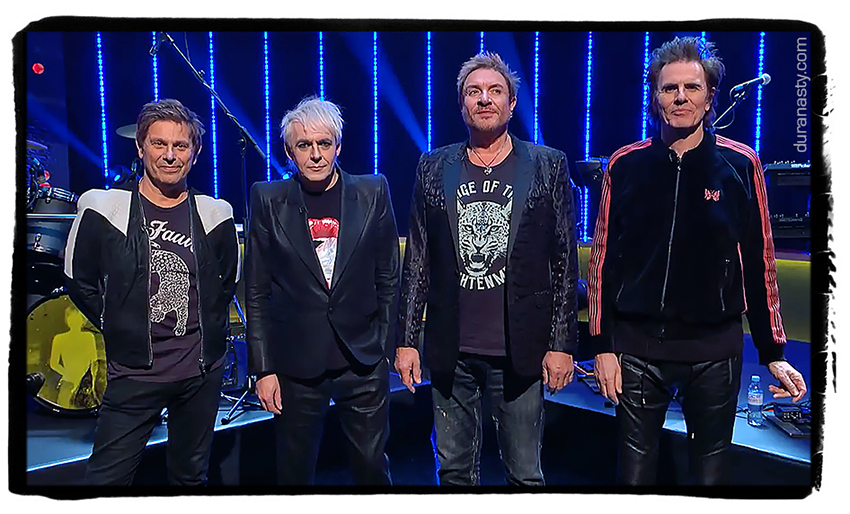
“Graham's crazy daring guitar line was so out of control,
it was like being in a video game and then we had
this uplifting chorus that makes everyone smile”
Nick Rhodes
“It was born out of a crazy jam with Duran Duran, Graham Coxon and Erol Alkan“ recounts Nick. “It all started with that little rhythm box and sequencer that you hear at the beginning and it sounds almost like an 80s Casio or something. That gave me the seed of the idea: It reminded me of one of those retro Japanese video games, which I always found quite uplifting… one of these 16-bit or even 8-bit Japanese Arcade game from the 80s!”
“I just thought, 'What if this song makes you feel like you're in that video game? How could it work?' When we all started playing it together, it ended up going in a different direction, because Graham was playing this crazy, daring guitar line that was so out of control and I thought, “Well, that sounds as if it were in a video game!”
“I think the guitar on that track is so spectacular and it was done completely live; there are no guitar overdubs on it at all. Sometimes when we were jamming on it, I couldn’t tell at certain points when I was putting things through effects or when Graham was putting things through effects. I didn’t know who was playing what. We loved working with Graham, as he is truly an inventive musician and a great energy in the room.”

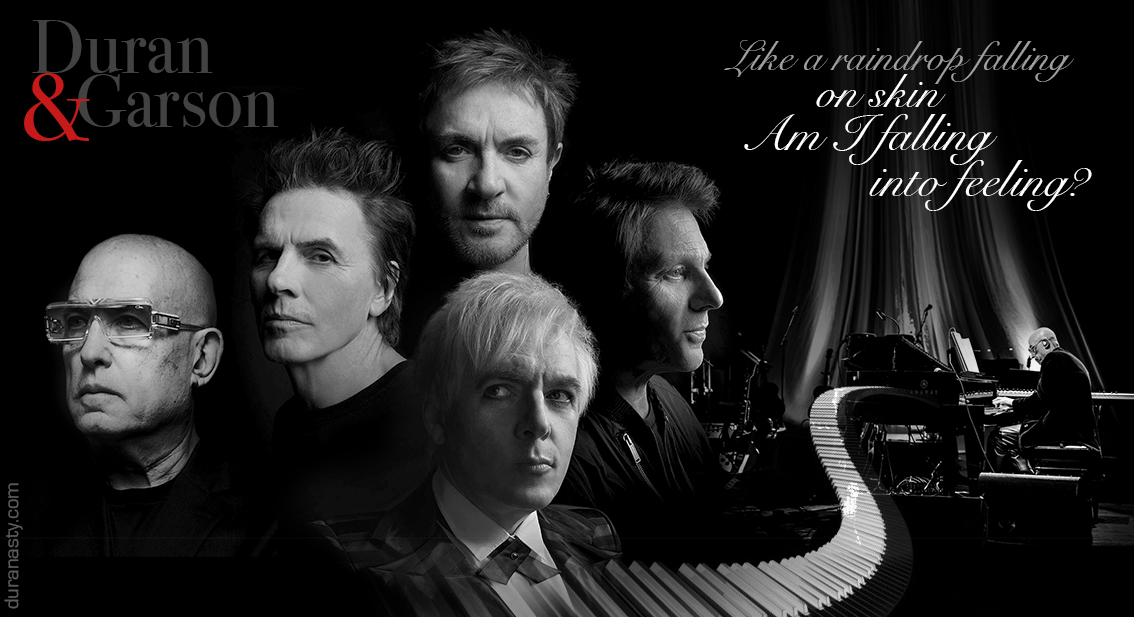
“Our keyboardist gives me permission to ask another keyboardist if he would like to work on our album. Mike was immediately enthusiastic. 'Absolutely! I would love it!'”
John Taylor
The final track, “Falling,” is a straightforward ballad featuring a superb piano contribution from former David Bowie pianist Mike Garson. It expertly mixes a nuanced backbeat synth with atmospheric sounds and Garson’s excellent piano playing.
John Taylor have met Mike Garson, David Bowie's pianist, one of the greatest musicians, we've always admired everything he had ever done, we told him: could you just play something, a little bit like Alladin Sane and Lady Grinning Soul, it was a dream as kids, and came back with this thing, we were speechless.
“Mike has a very concise style of play. He's like a hybrid of a classical and jazz pianist, says John. “For me, "Falling" is a tribute to David Bowie. We didn't plan it, but it turned out that way. It has a really moving quality. Simon was never accompanied by such sounds.”
“When we meet Mike Garson was like 'just give us your sound, give us what you played on Aladdin Sane and Lady Grinning Soul' ”
Nick Rhodes
“I think it's a stand out piece on the album, it's an absolute thrill to us to work with Mike Garson, David Bowie's long time pianist, we grow up listening to the Bowie albums, we were all completely in love with Aladdin Sane in particular which features Mike Garson very heavily,” recounts Nick. “So John have met Mike and I said 'wouldn't you ask him to play on the album?', John said 'No, I didn't, but I guess I should! Absolutely!' and so he asked and very kindly agreed and when we meet him was like "just give us your sound, give us what you played on Aladdin Sane and Lady Grinning Soul, one of our favourites tracks on that album, something like that, and what he delivered was so exquisite, we were almost speechless when we listened to it.”
“So we got it back, we all sat in the studio to listen to it, and you could have heard a pin drop. It was just silence and awe at his playing.
It was so thrilling to have one of your childhood heroes on your record
Nick Rhodes
When John asked to take part to the project "Mike jumped at it, he was very excited at the prospect of playing with us, at that point we really had the song together, a sketch of the song and the lyrics...”
Simon adds: “I finished the lyrics while the song was with Mike actually, it had a title, Falling always had a title, it was a working title, it was just a lovely idea, letting yourself fall, allow yourself to fall...”
“It all started Five Years”, continues Roger “it was part of the agreement” - jokes Simon - 'I play piano on Falling if you play that song Five Years for the David Bowie tribute concert”, and Five Years is a tricky song to do...”
John underlines the importance of the sound design on Falling: “it's remarkable! Credits to our sound engineer Josh Blair and our producer Erol, because we've never worked with anything quite like that, it's Jazz Classical, Mike has a very unusual style, he really treads both, he's got this Jazz, this Classical style... so making all that fit with all the programming was really something...
“Is a lovely way to close the album and almost an ode to our ultimate hero, David Bowie. I think it's kind of become a tribute to him”
Roger Taylor
Simon says: “After Falling nothing else could be added. It's like when a story ends, with the bad guy dead and the beautiful girl looking the desert… But the writer adds that the clouds form drawings that remind the girl of something. You feel that in yours head already begins another story. "Falling" gives this feeling: there is already an album waiting to be born.”

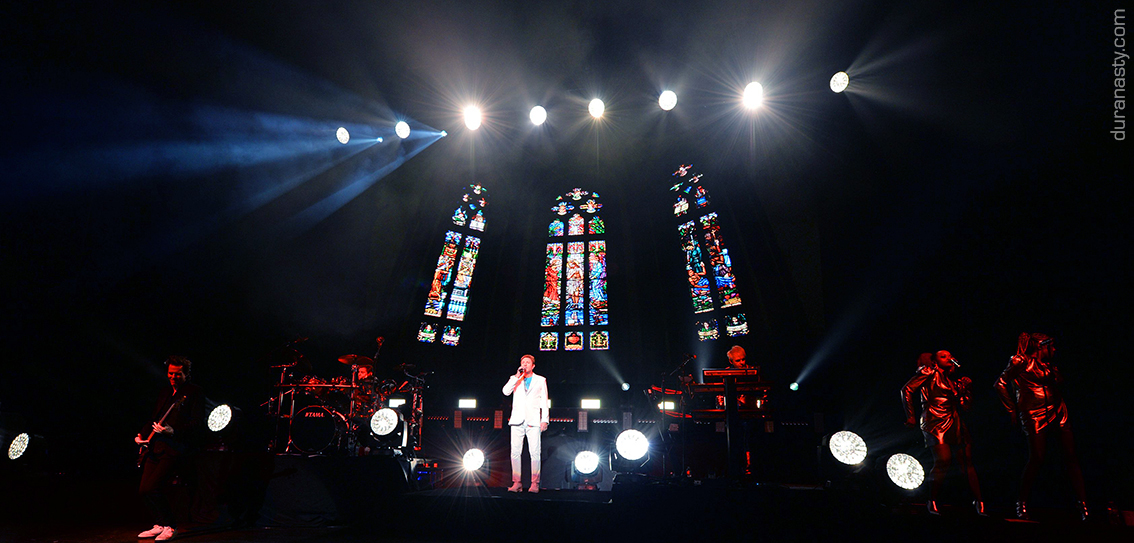
“The best moment in my life is when the lights go down
and our intro music comes on”
John Taylor
“It’s part of our DNA to get out there and play our songs to people” says Roger, “the songs from this album are really translating very well into the live arena because they have much more of a live feel.”
“I think we are moving towards a very exciting period,” says Roger, “We miss the live shows, we miss the fans a lot, I think it will be great to be part of this comeback to the live shows.
When we played the Isle of Wight festival, I’ve never seen so much joy in my life. People were so thrilled to be there, and it makes you understand how important music is. It’s a true positive force in a world where the news keeps feeding us with so much suffering and grief.”
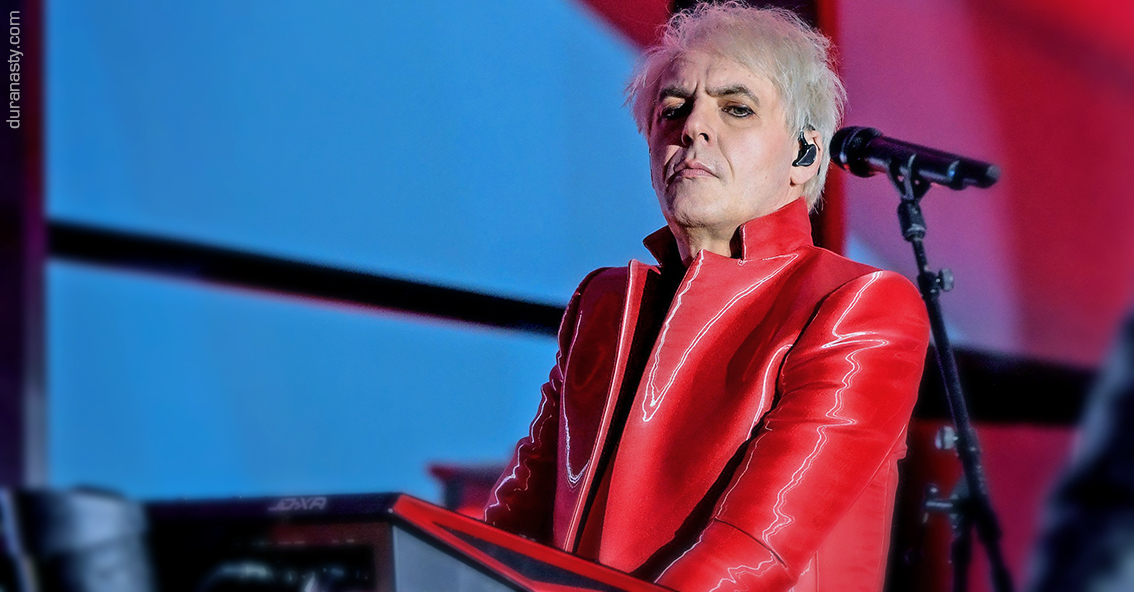
“I think people are appreciating what a big part of our lives music and particularly live performance really is, so it’s just great to be back”
Nick Rhodes
John reflects on the Live experience: “Live music as we knew it will return, in clubs and arenas and in fields full of strangers. We’ve all been changed by this experience. Coming together will be powerful. It’s going to be gradual, it won't be ‘Okay, day one, here we go, all the restrictions are off and everybody’s going to run back into each other’s arms. It’s not going to be like that. It’s going to be a very gradual return to normality and it could take a while, but it will happen, I can see thousands of strangers in a field singing along to “Ordinary World,” and it will be deeply moving. I’ve seen it happen.
I thought about the live experience a lot over the past few months. If you can be a part of something like that, if you stand in a crowd, it’s all about the music, it’s the music that brings people together, music is the religion. If you have that, it doesn’t matter who you’re standing with. It just doesn’t matter. Music is a great unifier. Playing live is going to be a profound experience.”
“It's important to bring people together, regardless of their background.
It doesn’t matter if you voted differently than the guy dancing next to you, in a live show we’re all the same, people having fun”
John Taylor

Simon reflects on the Live Experience: “We live in a very fragmented world, Covid has caused separation and made point of views and politics more radicalised. People are getting more and more angry at each other, on social media, on the internet. And politicians try to exploit differences to empower themselves. Having said that, music is one of the few spaces that unites people. It doesn't matter if you feel different: here you can have your differences and still see yourself reflected in the other. A concert is the most important expression of this, because it brings physically together different human beings. And we all feel better about being human.”
On the recent live shows:
John said that being back on the road again was liberating after the pandemic. He added: “Everyone has really missed that live experience where we can f****** stand together.”
“We played in Scarborough and it was incredible. I can’t remember getting a reaction like that for our entire career. It was almost hysterical.
People are ready to lap up live music again”
Roger Taylor
Setlist formula?
“Every gig is like an ideal retrospective, an opportunity to say, ‘This is who we are and this is why you should care’ says John. “We take it very — God, too seriously, really. It’s an ongoing dialogue. I do feel our core audience actually wants to hear fun new music, and of course everybody wants to hear the hits. It’s a quality problem; We’ve got a lot of great songs people love to hear.”
Simon notes “The formula is two thirds old songs, indeed classic as we call them, and one third of new songs.”
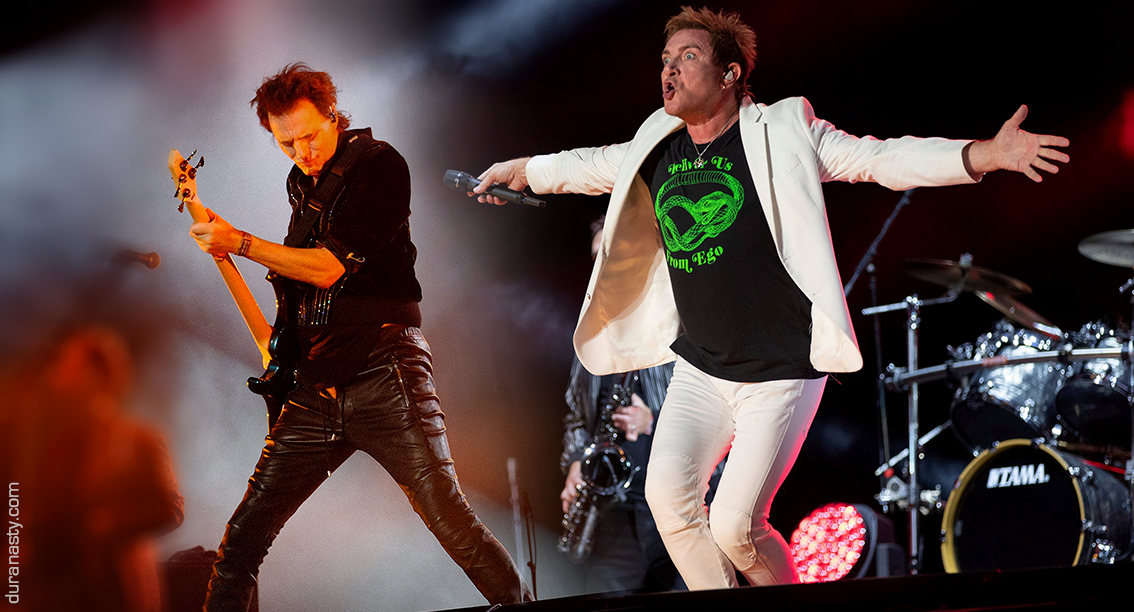

“We’re looking at dates in April. There’s talk of a 32-day US tour, but you can only go so far with booking these things at the moment. Putting tickets on sale is risky”
Simon Le Bon
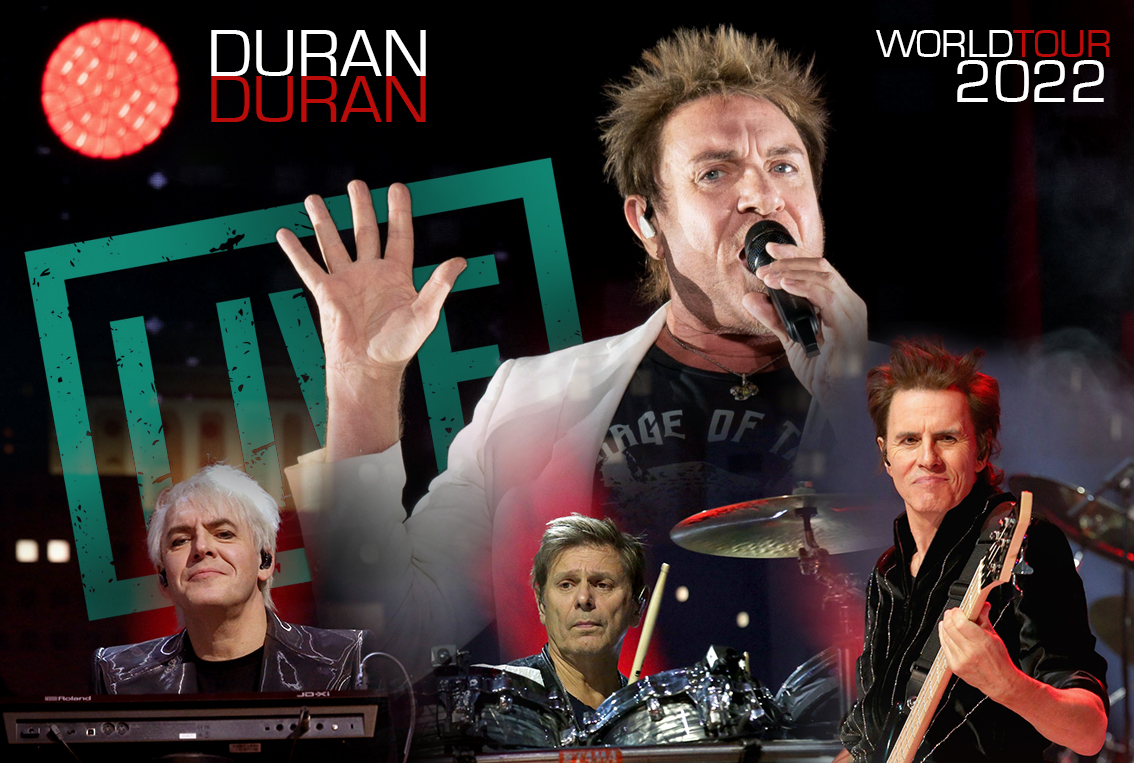
Keep checking the website and don't forget to
join duranasty.com's community on Facebook for regular updates

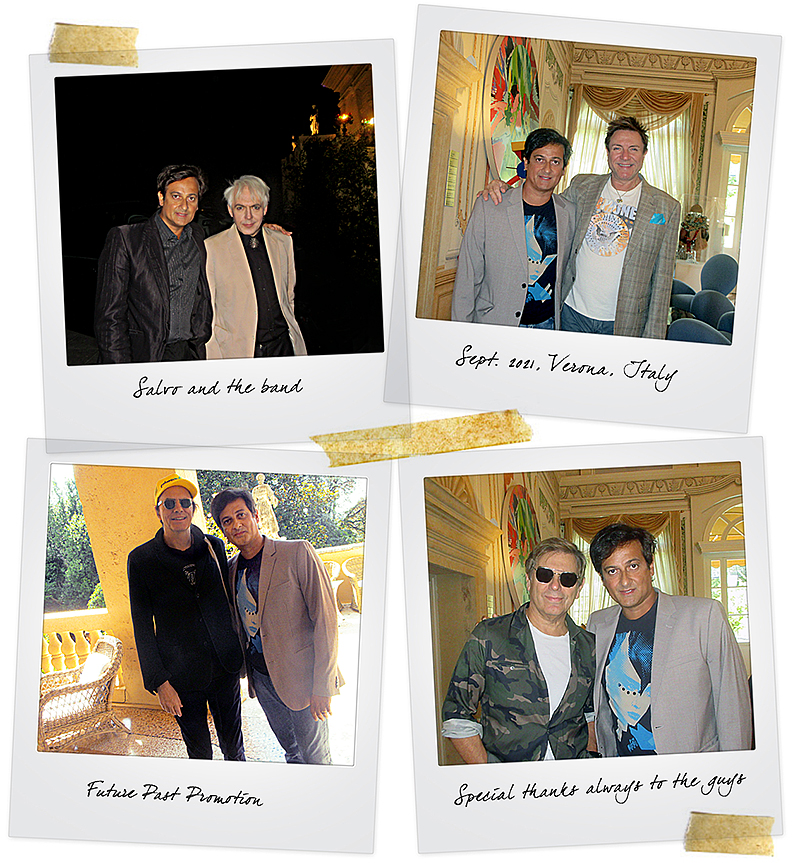
Special thanks to Duran Duran
www.duranasty.com is a fan-site for all the fans of Duran Duran on Planet Earth | duranasty.com 2002-2021: 15th years serving the fan-base and promoting the band
No part of this page can be reproduced without crediting www.duranasty.com info@duranasty.com
Thanks to all media and the sources used in this edition of the e-zine
The life and times of D u r a n a s t y ® All rights reserved